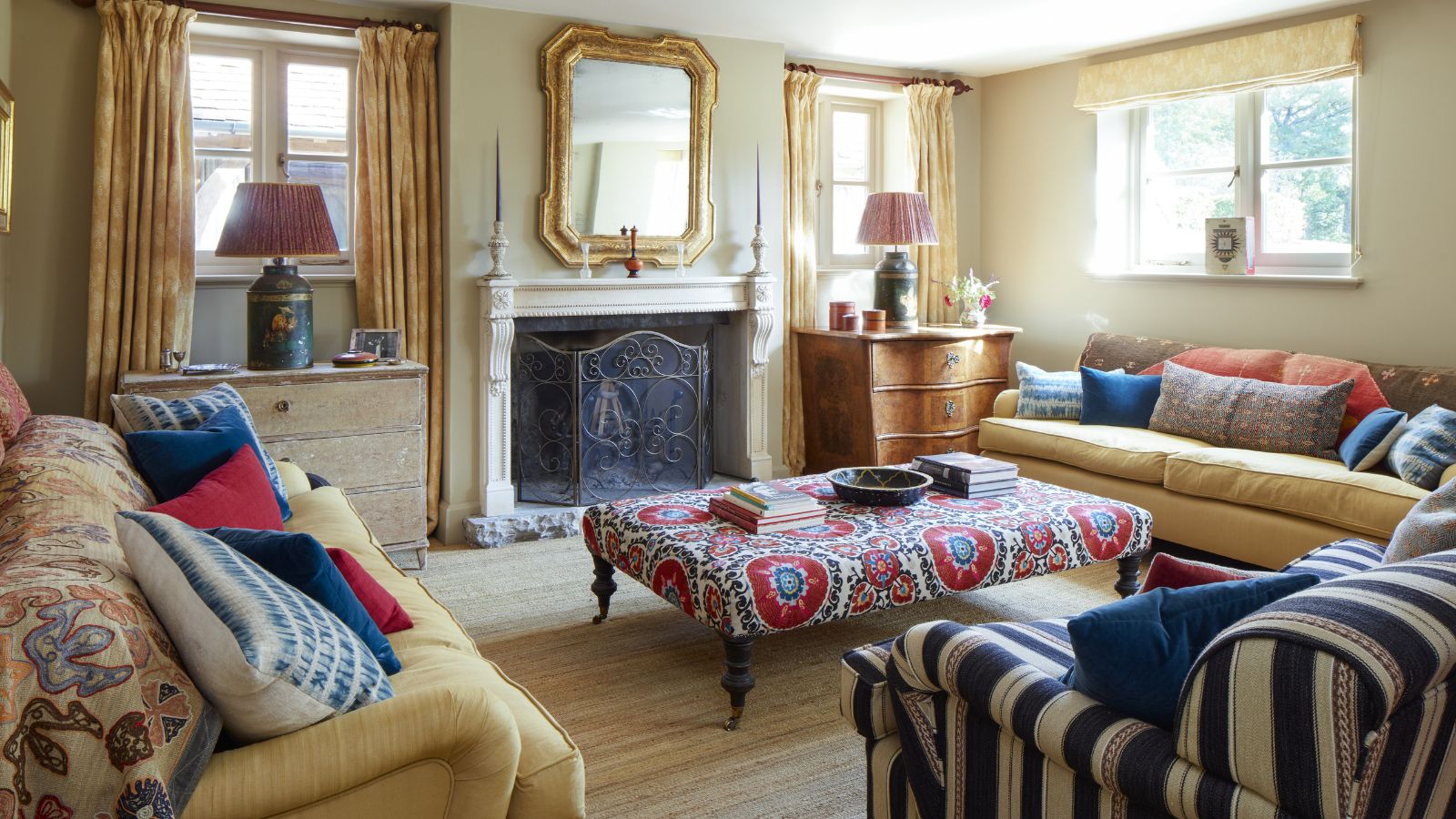
Living rooms are multi-functional spaces. Whether you're retreating to the lounge after a long day or seeking the perfect spot to work from home, the living room should be stylish, practical, and most importantly, an inviting haven.
The best living room maintains a balance of curation and coziness. A base of uplifting colors, followed by layered textures, some sturdy furniture, and an assortment of meaningful trinkets, is the recipe for a living space that fulfills your daily needs and best represents your style.
Our 40 inspirational ideas will guide you on where to start with your living room design. Featuring advice from expert interior designers and the Homes & Gardens team, our list of living room inspiration is filled with timeless ideas designed to suit all interior design styles.
40 living room ideas to suit any interior design style
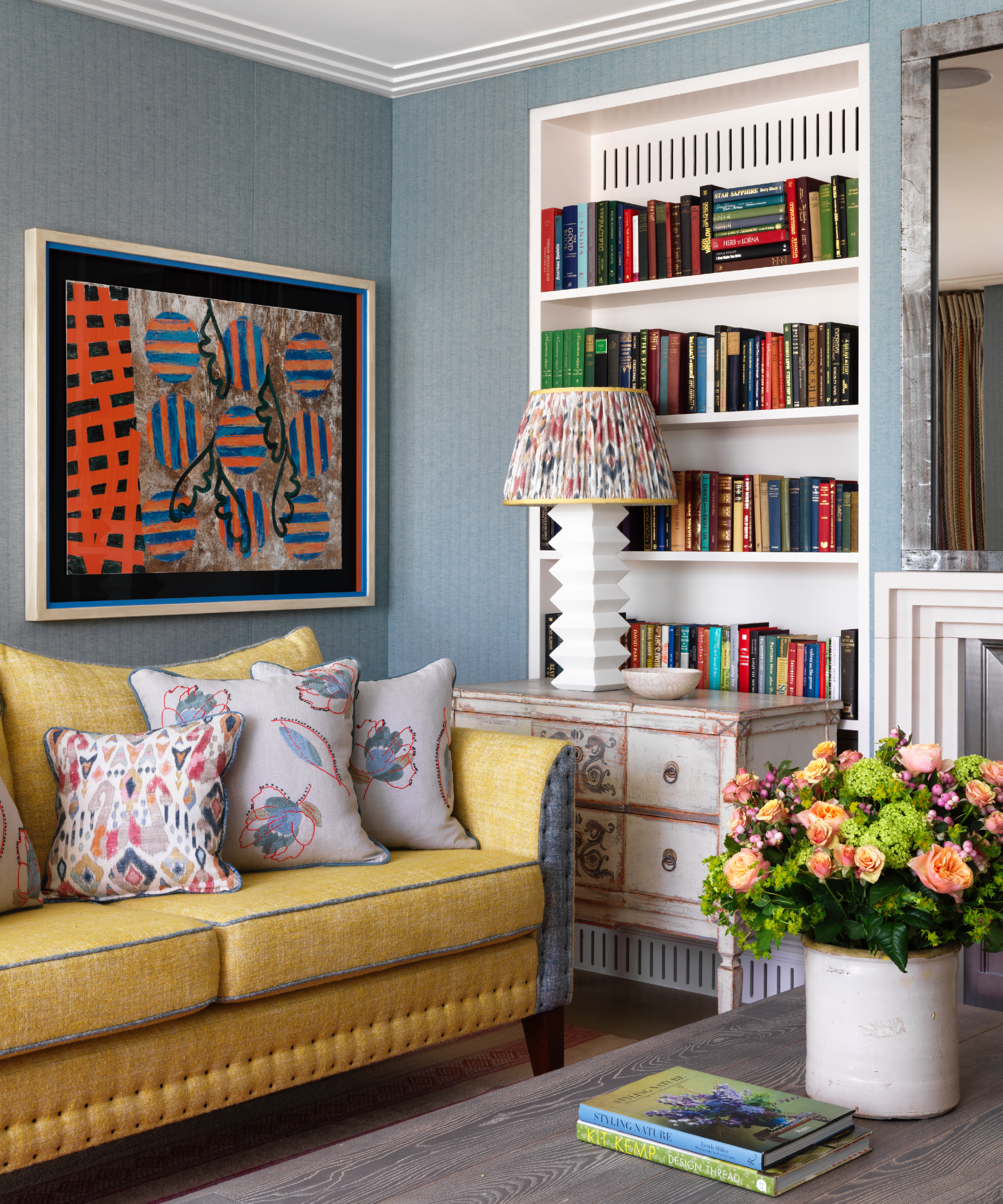
Whether you prefer a minimalist aesthetic or a more eclectic look, small but intentional design choices and living room trends can have a lasting impact, ensuring your space remains both practical and beautiful.
These expert-backed tips and creative ways to bring lasting style, comfort, and personality into the heart of your home are sure to inspire. Let's dive in.
Living room color ideas
Choosing the right living room color scheme is one of the most impactful ways to shape the mood and style of your living room. Whether you’re drawn to warm neutrals, deep moody hues, or nature-inspired tones, the key is finding a scheme that complements your home and personal style.
1. Start with a moodboard
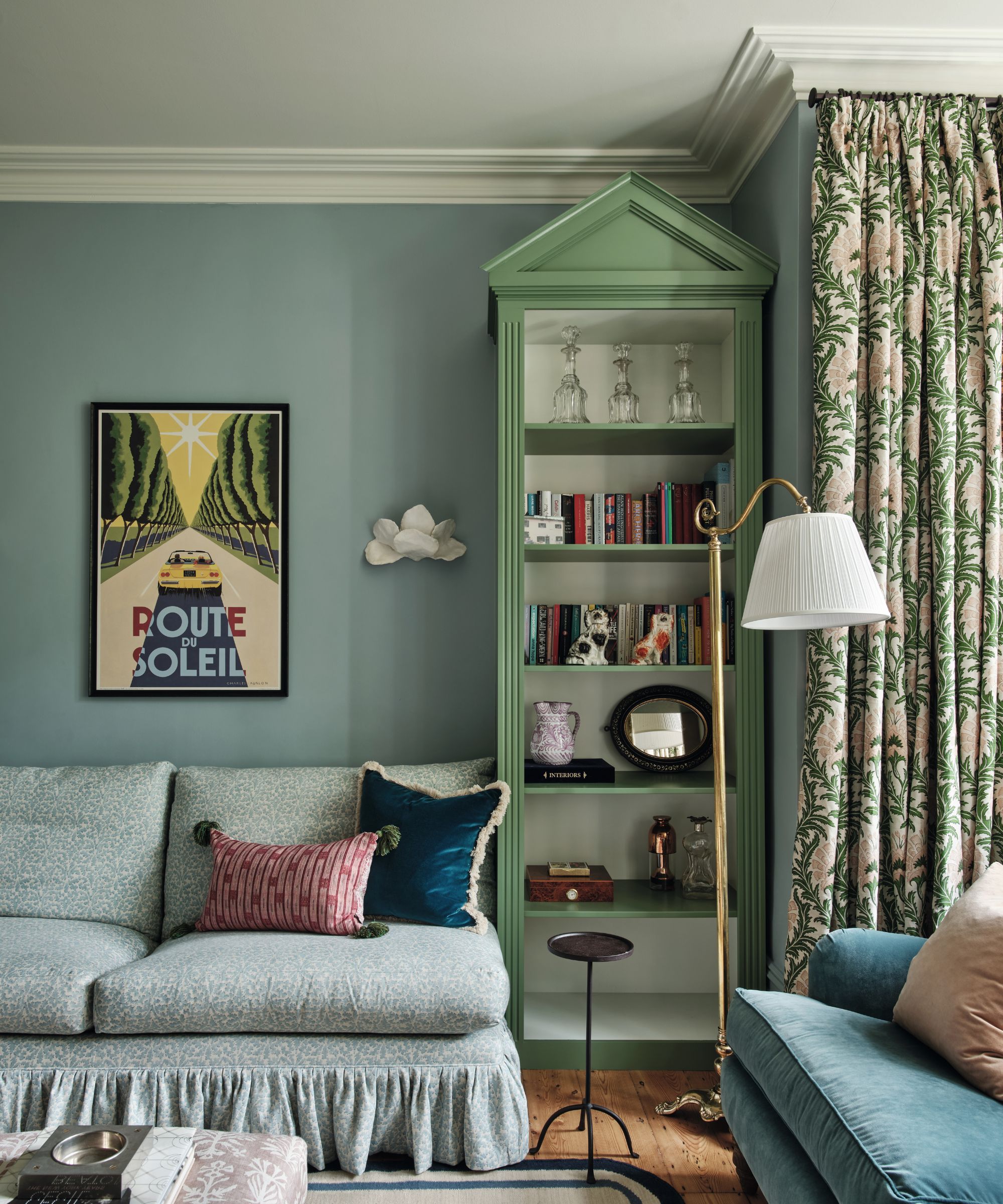
Sometimes the hardest thing to do when looking for living room ideas is to actually get started. We asked Patrick O’Donnell, Brand Ambassador at Farrow & Ball for his invaluable advice and the most important part? Get moodboarding!
‘Remember that any room is a sum of various parts so try and create a mood board with as many elements as you can get your hands on. When choosing paint colors, think about the aspect of your room (north, east, south, west) – a color you have seen in a magazine or friend’s house may not respond in your room so sampling is essential, try and paint large swatches that you can move around the walls at different times of day to see how the color transitions in all-natural light conditions.’
If you don't know where to start, knowing how to make a mood board will help you create a useful tool that will prove essential to achieving the interior project of your dreams. Whether you prefer a digital approach using platforms like Pinterest and Canva or a hands-on method with paint swatches, fabric samples, and magazine cutouts, a mood board provides a clear direction for your space.
2. Embrace the trend for color drenching
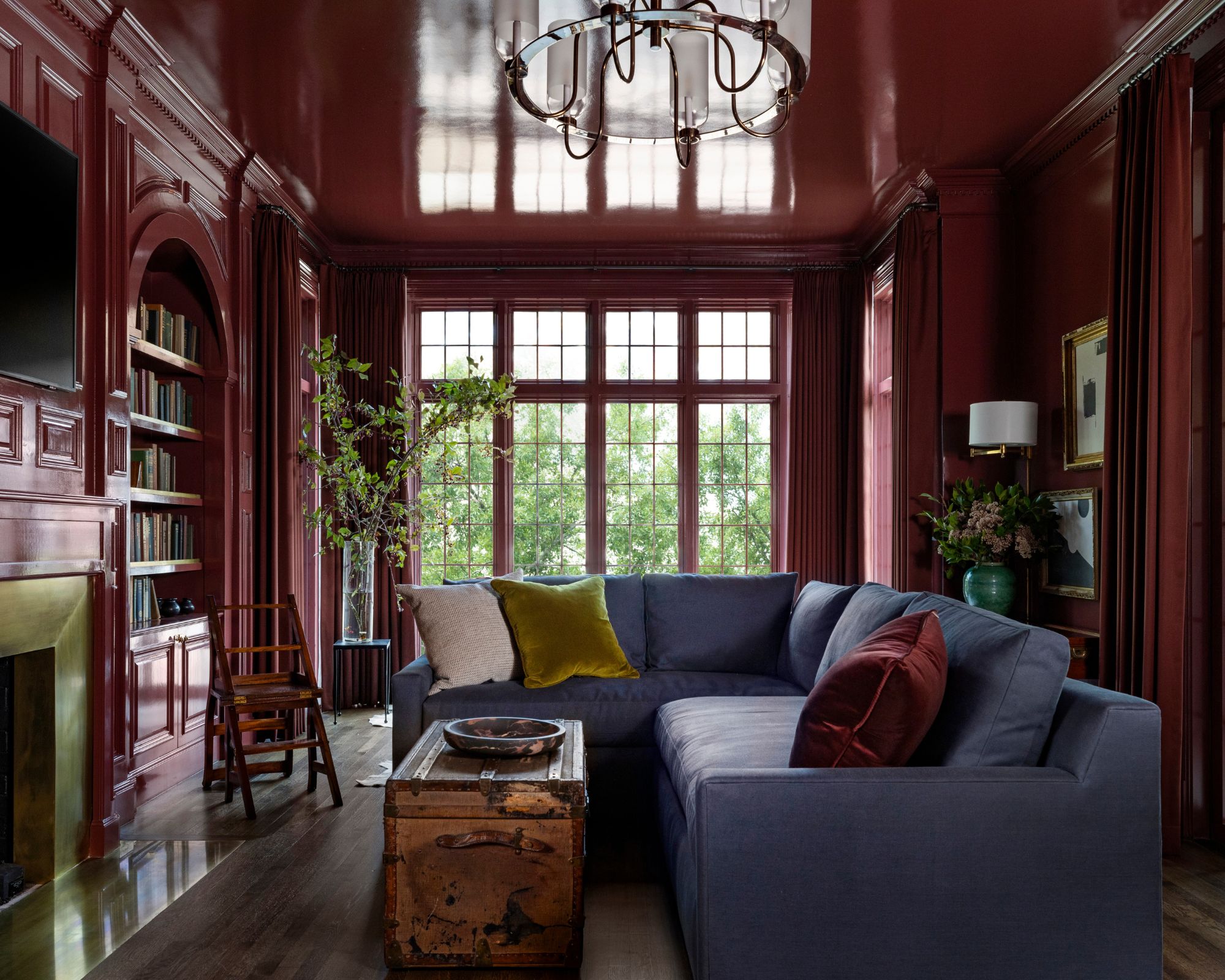
Color drenching, the idea of painting every surface in a single, bold hue, is a decorating technique that is gaining popularity for creating more cocooning living room spaces. The key to successful color drenching lies in choosing a color that complements the natural light and overall mood you want to evoke in the room.
'We have found that as we’ve all been spending more time in our homes, there has been a really exciting shift in how experimental we’re being with living room paint ideas and our customers are increasingly focusing their living room scheme on a tone that they want to immerse themselves in,’ says Dominic Myland, CEO of Mylands.
‘One such trend is color drenching – painting the walls, woodwork, and even the ceiling one color for a welcoming, immersive room with a modern edge. We’d always recommend really thinking about how that color will interplay with the light in your room and trying samples first to make sure you love it.'
3. Or, try out double drenching
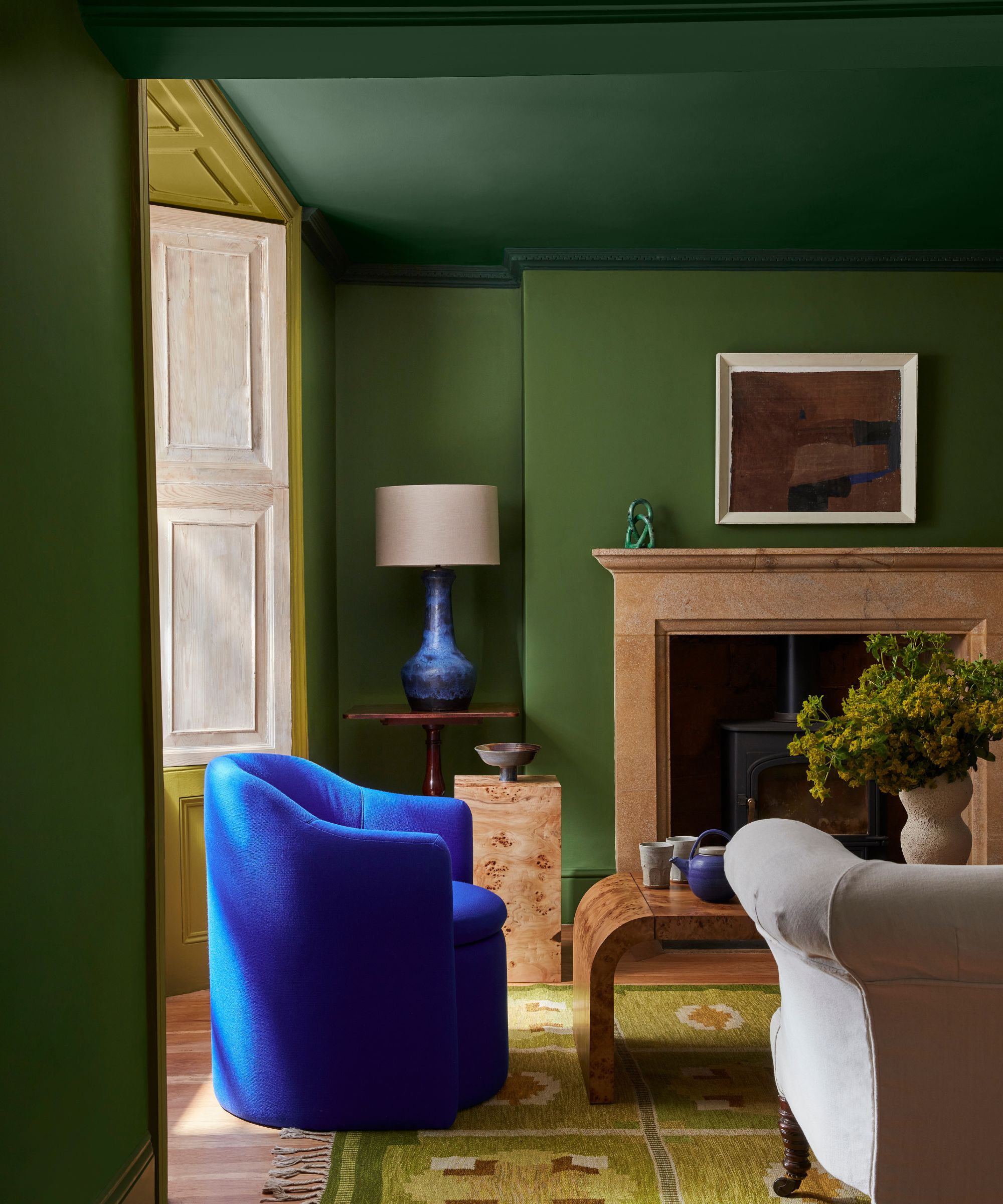
Alternatively, try double drenching. If you love the impact of color drenching but want to add a bit more dimension and contrast to your living room, double drenching is a technique to consider.
Coined by paint brand Little Greene, their experts explain it as the 'dramatic transformation of a space by painting two or more related colors on all available surfaces to achieve an even more accomplished "wow factor" in a room.'
Simply put, you take two harmonious tones and use them to drench your space in a wash of cocooning color. 'Soft hues prevail for 2025, but that doesn't mean you shouldn't embrace color! Layer varying tones of the same hues for a look that is both sophisticated and colorful,' suggests interior designer Bethany Adams. 'Look for art and accessories to bridge the divide between varying hues in your room and provide visual interest.'
4. Pick a dark tones – but add touches of light and warmth
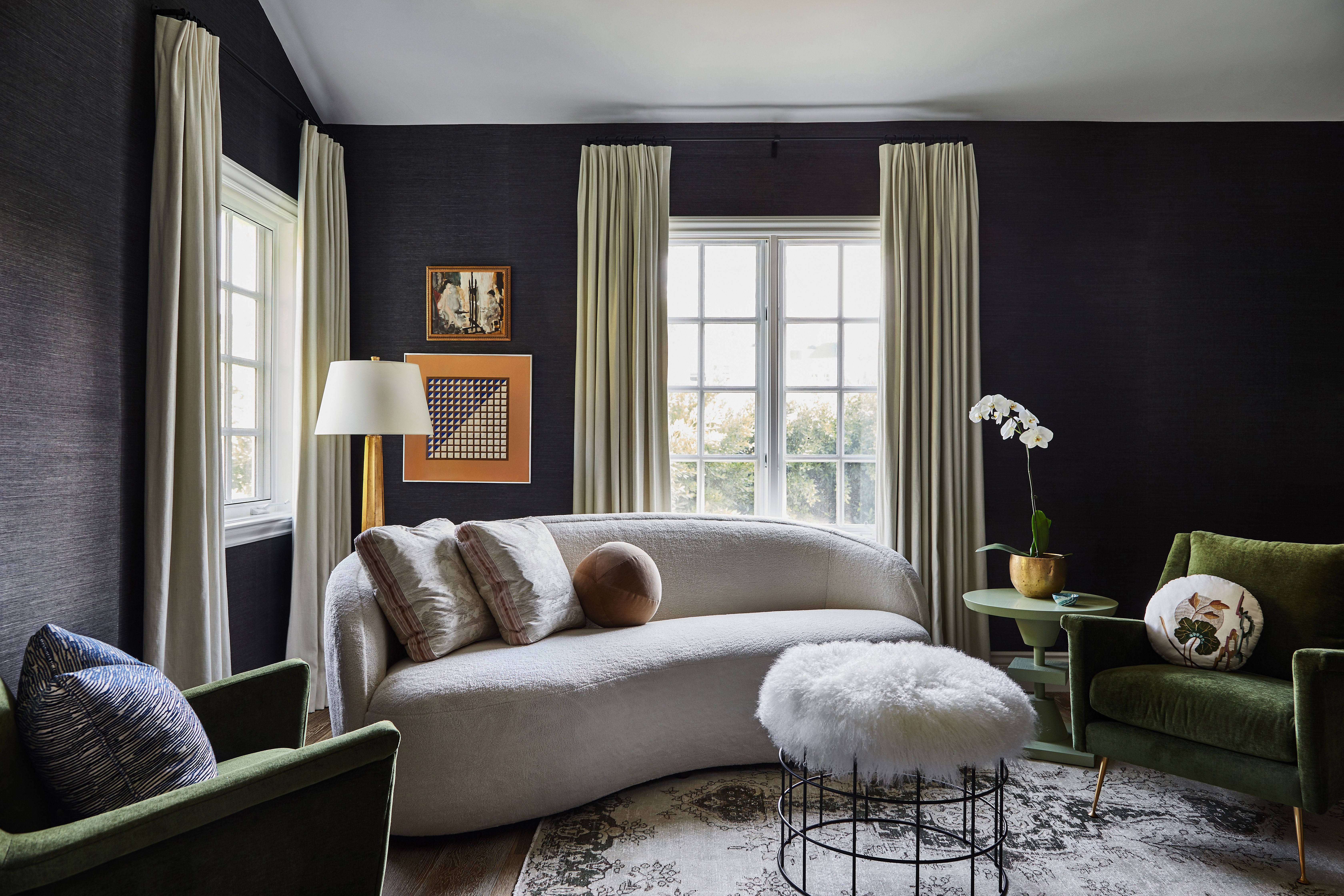
Decorating with dark colors in your living room can evoke a sense of sophistication, drama, and coziness. Rich colors like charcoal, deep navy, or forest green create a grounded, intimate atmosphere that invites relaxation.
Stefani Stein, who runs an interior design studio in LA, specializes in room schemes that are easy to live with but which still create impact. This dark living room above typifies her approach – drama in the contrasts, curvaceous furniture that's modern but welcoming, and a really traditional feel, despite the modern approach.
However, when working with dark hues, it's essential to balance them with touches of light and warmth to prevent the space from feeling too heavy or closed off. If, like Stefani, you wish to use a dark color on your living room walls to create a cozy, intimate feel, be sure to balance out the darker shades with pale colors and add a touch of warmth with accent colors in furniture and accessories.
5. Look to warm, earthy neutrals
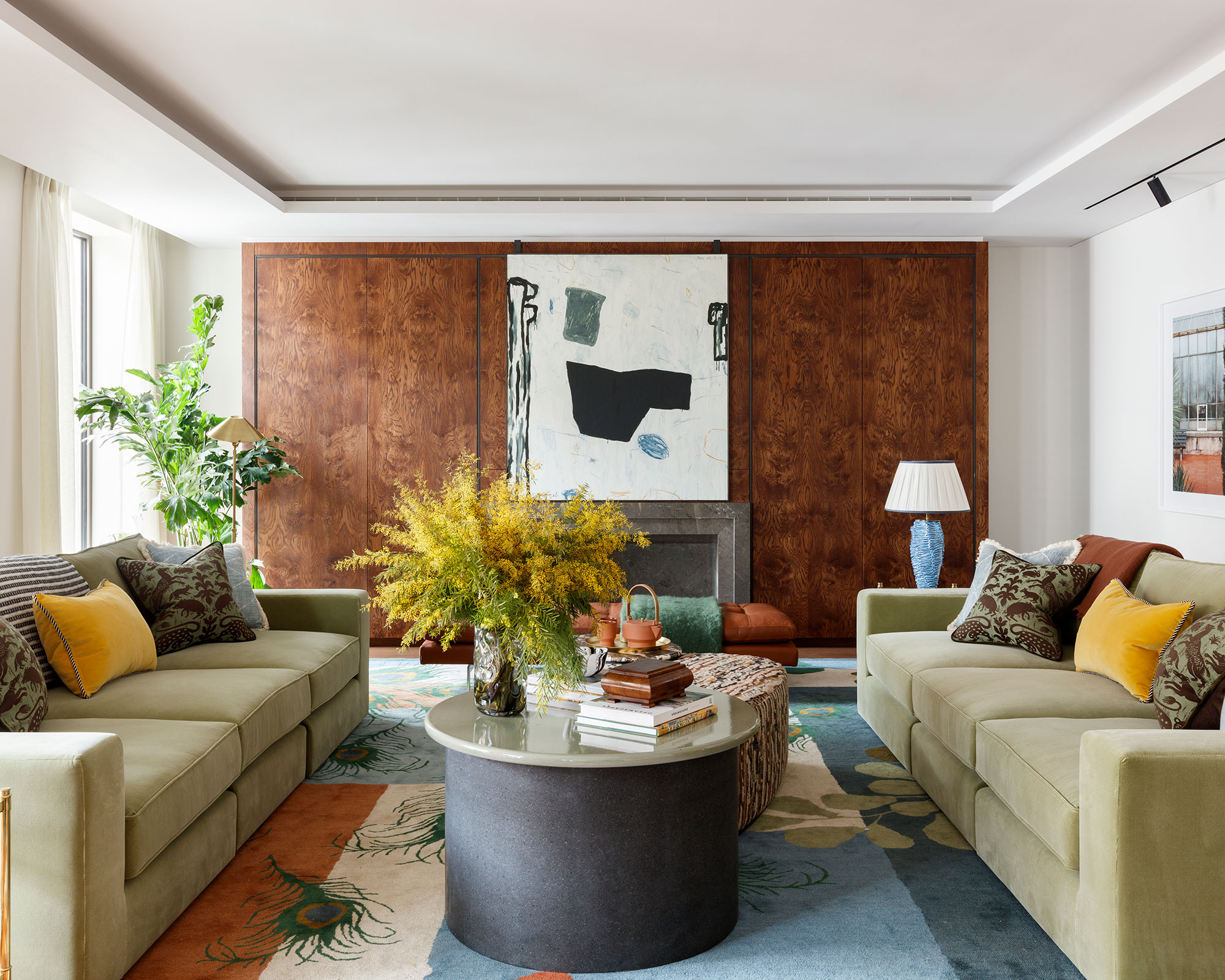
When it comes to creating an inviting living room, warm, earthy colors are a timeless choice. Shades like soft taupe, warm beige, terracotta, and rich clay evoke a sense of calm and comfort, making them perfect for spaces where you want to relax and unwind.
Interior designer Sophie Ashby reveals that nature provided the inspiration for this scheme’s welcoming, earthy palette. ‘The palette was inspired by Holland Park in London and features neutral colors: greens, blues, russets, oranges and yellows,’ says Sophie. ‘We started with the rug, which we designed as an ode to the park, incorporating peacock feathers as well as leaf motifs.’
'Warm neutrals are best when paired with rich accent colors – think deep green, terracotta, or midnight blue – to create inviting, sophisticated spaces,' adds Michelle Murphy, founder of DEMI RYAN.
6. But don't shy away from bolder colors too
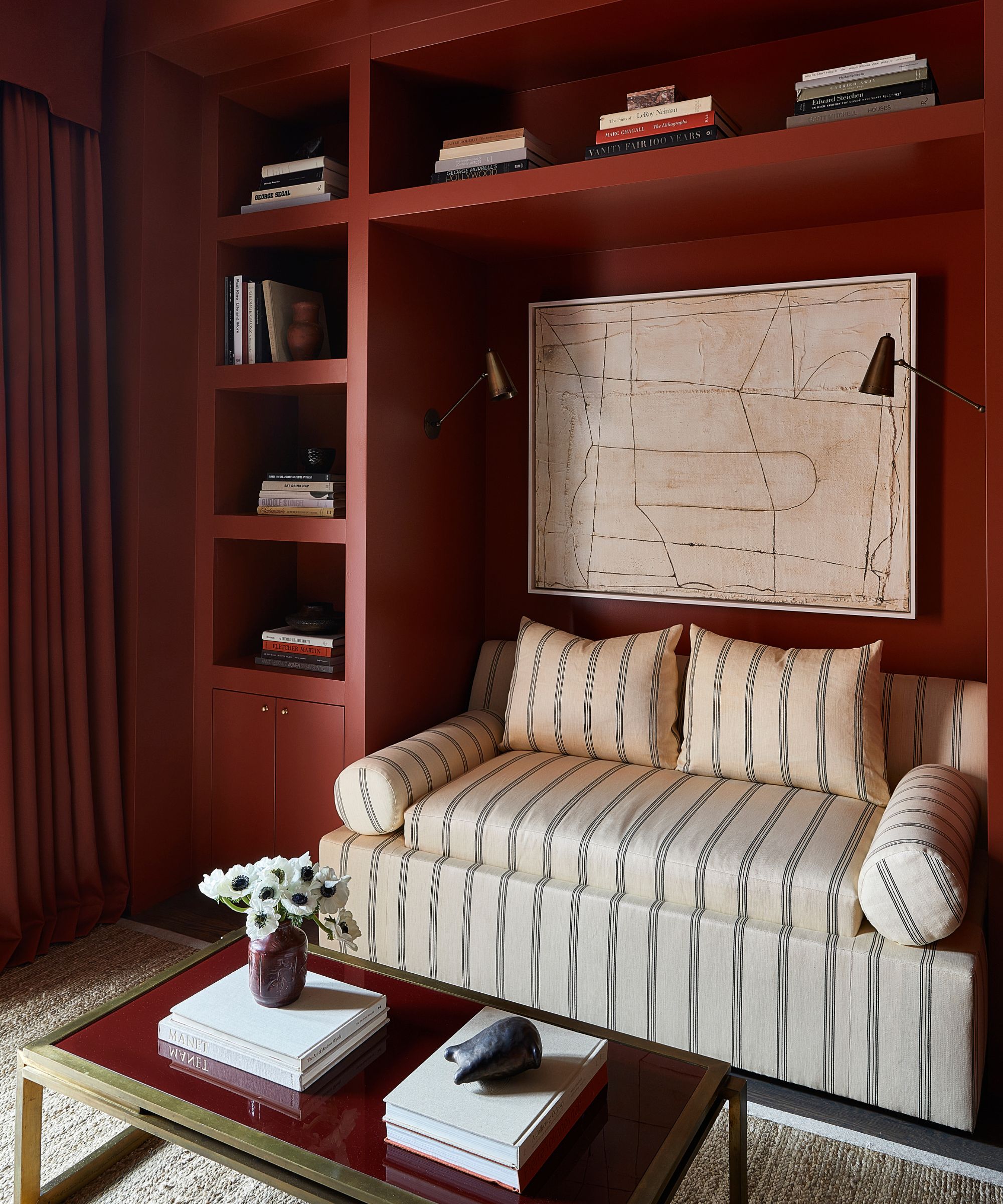
While warm, earthy neutrals create a serene foundation for any living room, there’s no need to shy away from incorporating bolder colors into your design scheme.
Bolder hues can be used to create a sense of drama or inject personality into your space. It's all about how you use them – whether you choose to color drench, try out an accent ceiling, bring in colorful furniture, or vibrant accessories.
There are a few ways to pull off such a daring look. You could choose an inspirational piece, like a rug or artwork, to pull hues from. This ensures your room stays cohesive and creates a reference point for each color.
Or keep the colors in a similar shade or tone, like brights or pastels. Matching tones will keep the room feeling unified. Finally, if you're partial to a single color, mix up a monochrome look by incorporating various shades and tones of a single color.
7. Pick a high contrast color scheme
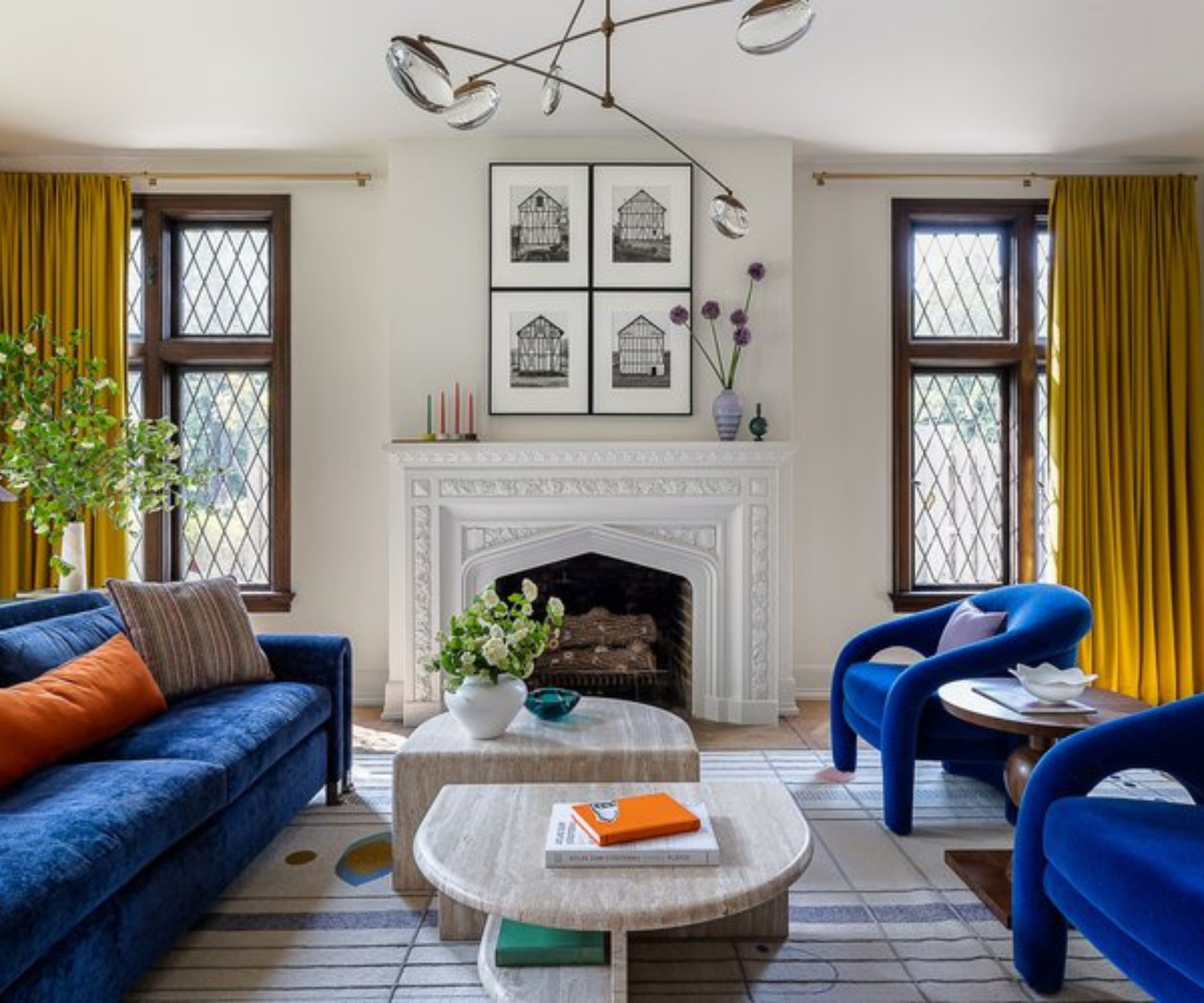
Tonal color schemes are easy on the eyes, however, they don't have that same wow factor as a contrasting color scheme. By pairing colors from opposite ends of the color spectrum – such as black and white, navy and mustard, or emerald green and blush – you create an exciting dynamic that draws the eye and adds drama to the room.
And they needn't be as jarring as they sound. This living room designed by Bethany Adams Interiors brings together two bold clashing colors, yellow and blue, and yet the neutral backdrop ensures it still feels chic and doesn't overwhelm. High contrast schemes offer instant impact and are perfect for creating a space that feels energetic and modern.
As designer Marie Cloud explains, 'A high-contrast color scheme, such as black and white or navy and gold, adds a bold, sophisticated touch. Use a neutral base for walls and large furniture pieces, accentuating with darker or metallic accents.'
8. Strive for serenity with a nautical-inspired palette
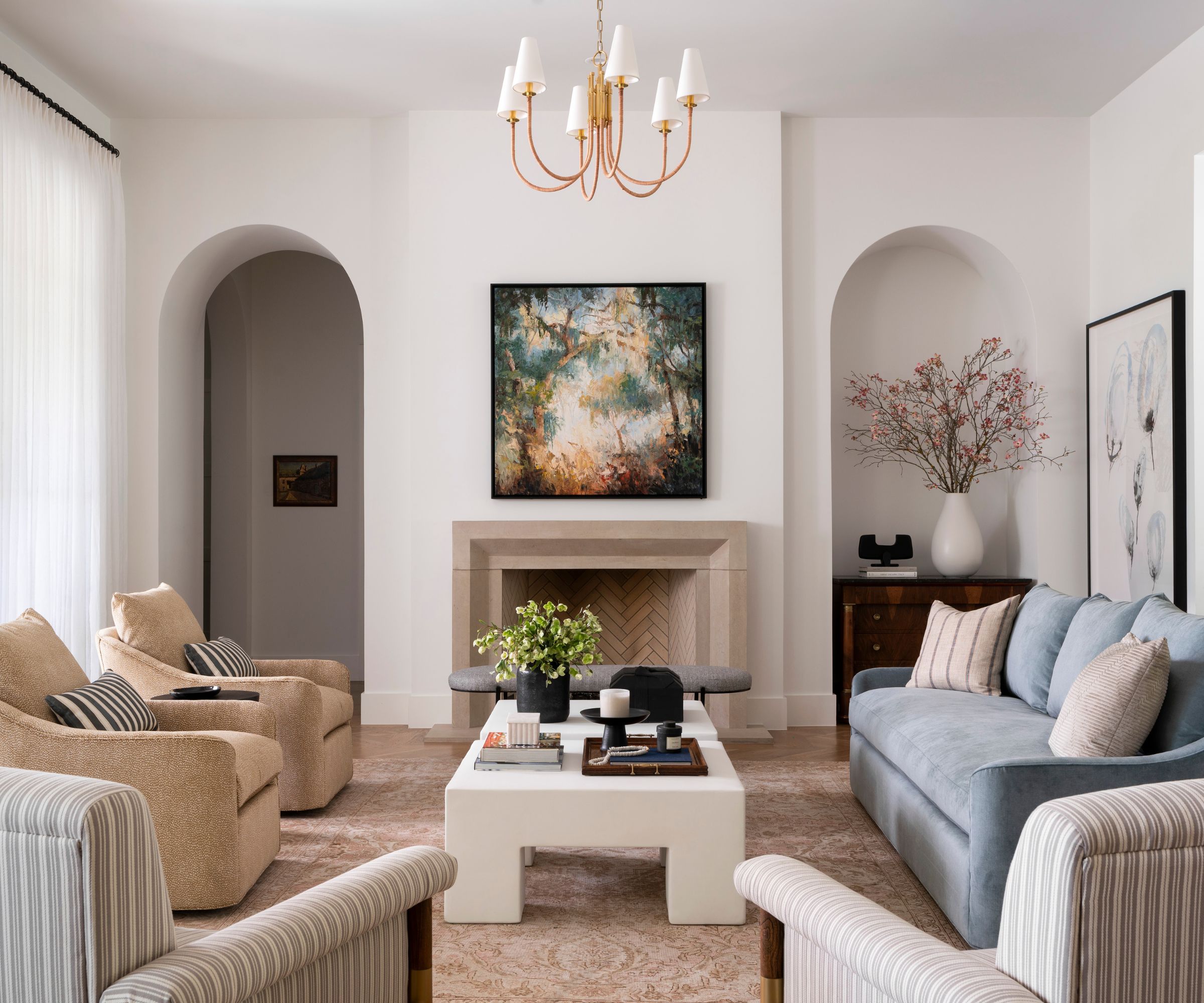
This coastal living room idea features a calming neutral color palette, achieved with a white paint shade and layers of neutral and pale blue furniture. The result is a soothing, peaceful living area that invites you to lounge and relax.
Using the best calming colors, Sara Malek Barney from BANDD/DESIGN says, 'In this living room, we focused on creating a balance between modern architecture and more traditional, collected furnishings. The clean lines and open layout provided a contemporary backdrop, which allowed us to layer in color, pattern, and texture through the furniture and textiles.'
While certain shades like neutrals and pale blues nod to the nautical look, patterns and textures pay homage to the style subtly, such as stripes and rattan.
Living room layout ideas
When it comes to designing a living room, the layout is just as important as the color scheme and decor. A well-thought-out living room layout can make even the smallest spaces feel open and inviting, while also ensuring the room serves its practical purpose.
9. Plan in your layout early
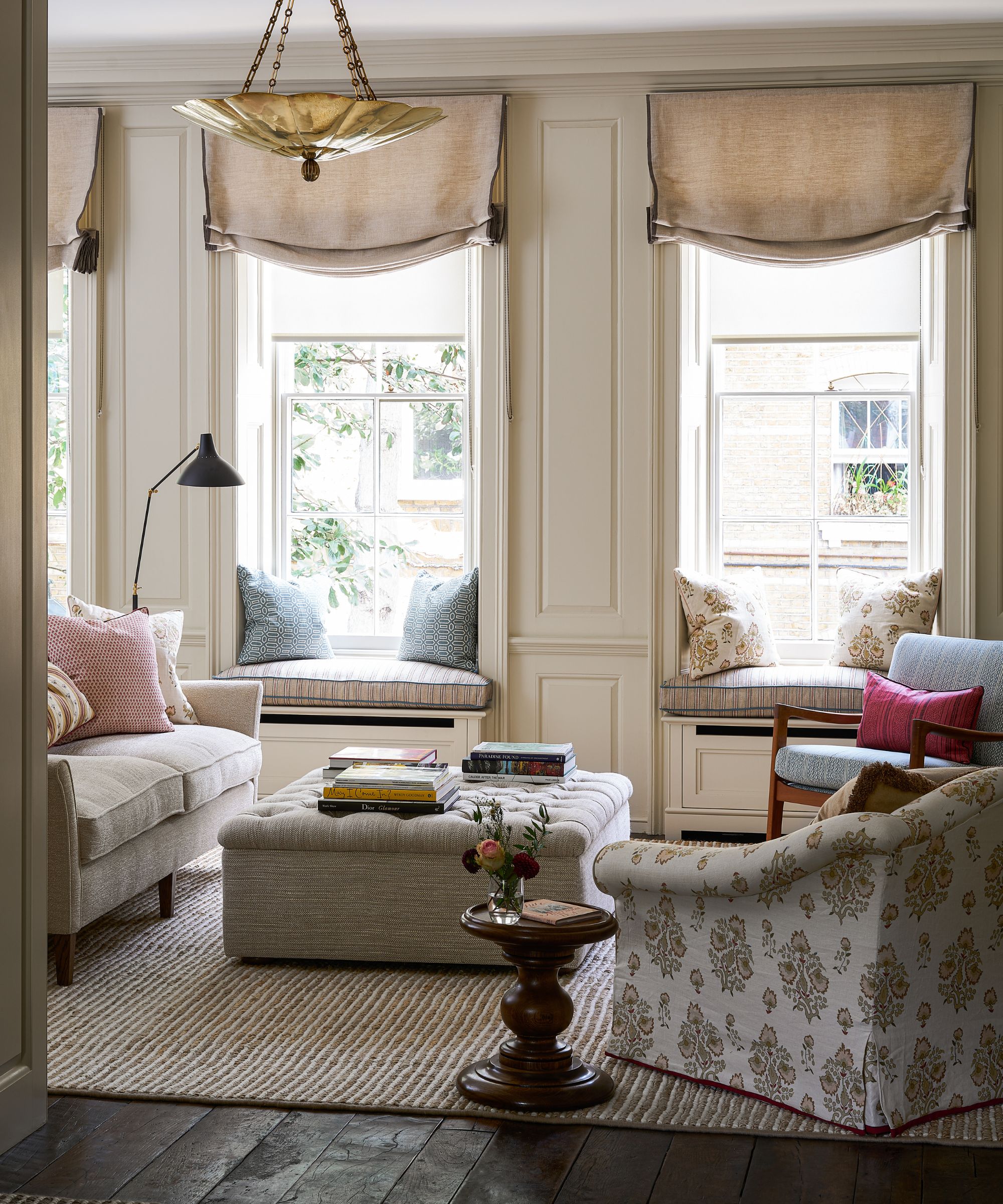
One of the most crucial steps in designing a living room is planning your layout early in the process. It’s easy to get carried away with choosing furniture and decor, but without a clear plan for how everything will fit into the space, it’s easy to overlook the room’s functionality.
UK-based designer Tiffany Duggan of Studio Duggan believes careful planning is all-important when it comes to design, and since your living room ideas are quite literally the center of your home, it's all the more important.
'Measure and plan where you are going to put each piece of furniture and make sure you have sockets in all the right places before you get decorating or ordering,' she says.
10. Make use of awkward nooks and corners
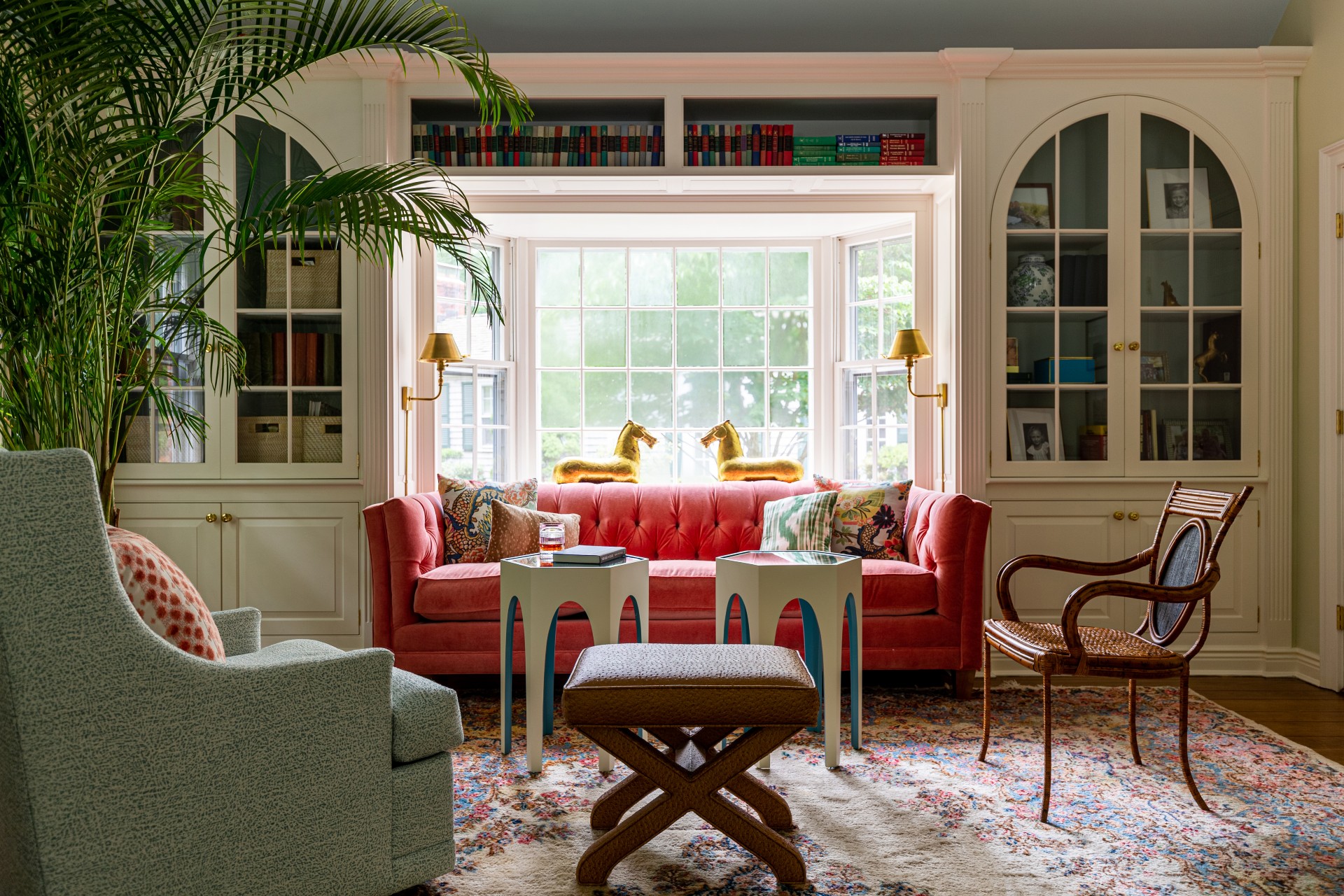
While living room alcoves and nooks can feel like a challenge, they actually present the perfect opportunity to build cozy corners, dedicated reading nooks, or create built-in storage.
So rather than ignoring these less-than-ideal spots, embrace them as opportunities to enhance the layout. With a little creativity, even the most awkward corners can be transformed into functional, stylish areas that make the most of the space you have and highlight original character features.
A common solution for a bay window in a living room is to convert it into a window seat. Instead, use a bay window as a bright but cozy inlet for a statement sofa, a la this space by Connecticut-based Camden Grace Interiors. Think of it as the window seat's sophisticated older cousin.
11. Look to create a multi-functional space
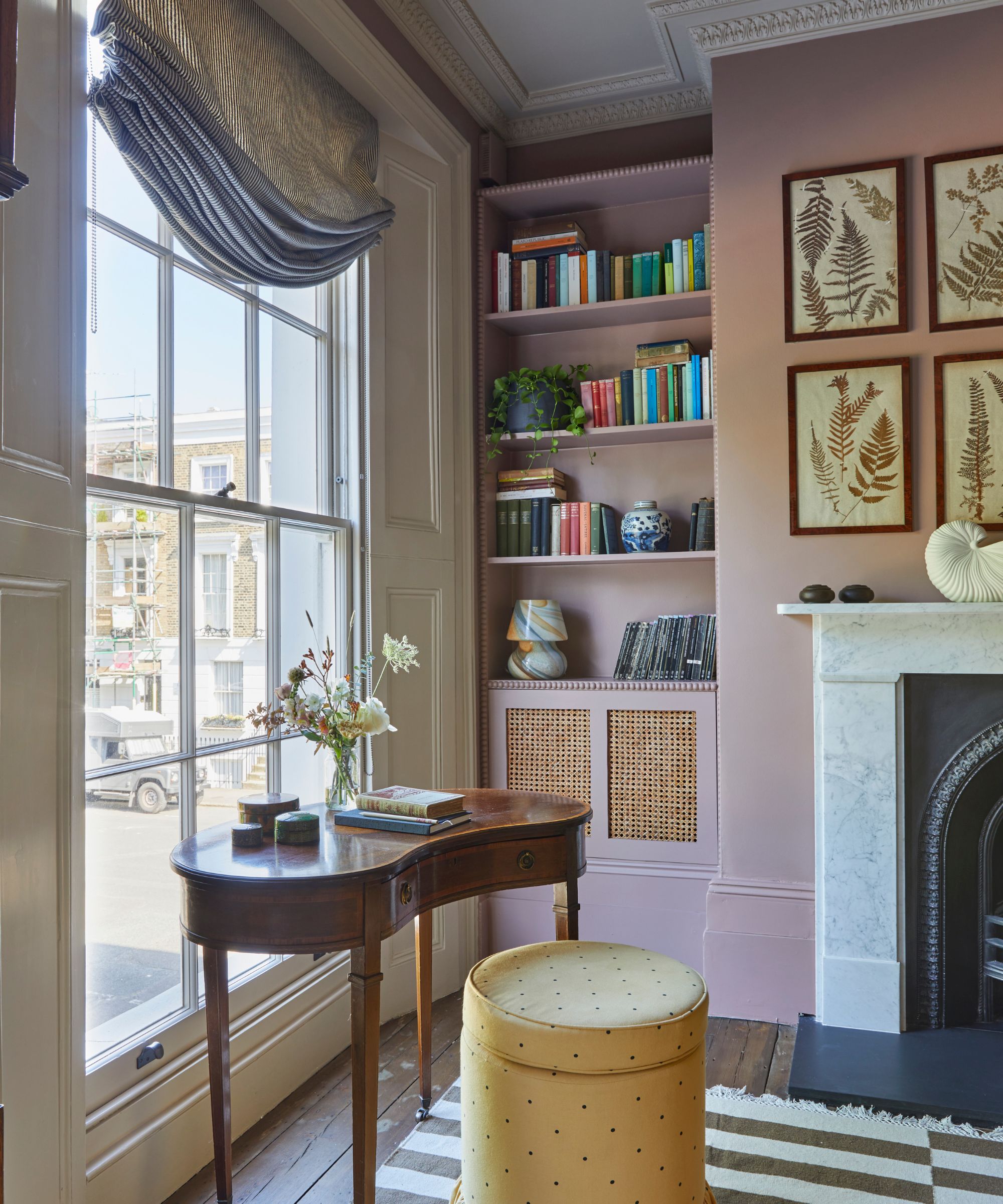
Every square foot matters so creating a multi-functional living room is more important than ever. The living room is often the heart of the home, where people gather to relax, entertain, work, or play as a family.
Designing the space to serve multiple purposes helps make the most of your square footage, creating a dynamic environment that adapts to your needs throughout the day. Try adding in a small desk for WFH, a sofa that doubles as a bed, or an ottoman that also functions as a coffee table.
'Multifunctional layouts are key,' adds Michelle Murphy. 'Incorporating hidden storage, modular seating, and adaptable spaces will help to cater to both work and relaxation.'
12. Include custom floor-to-ceiling storage
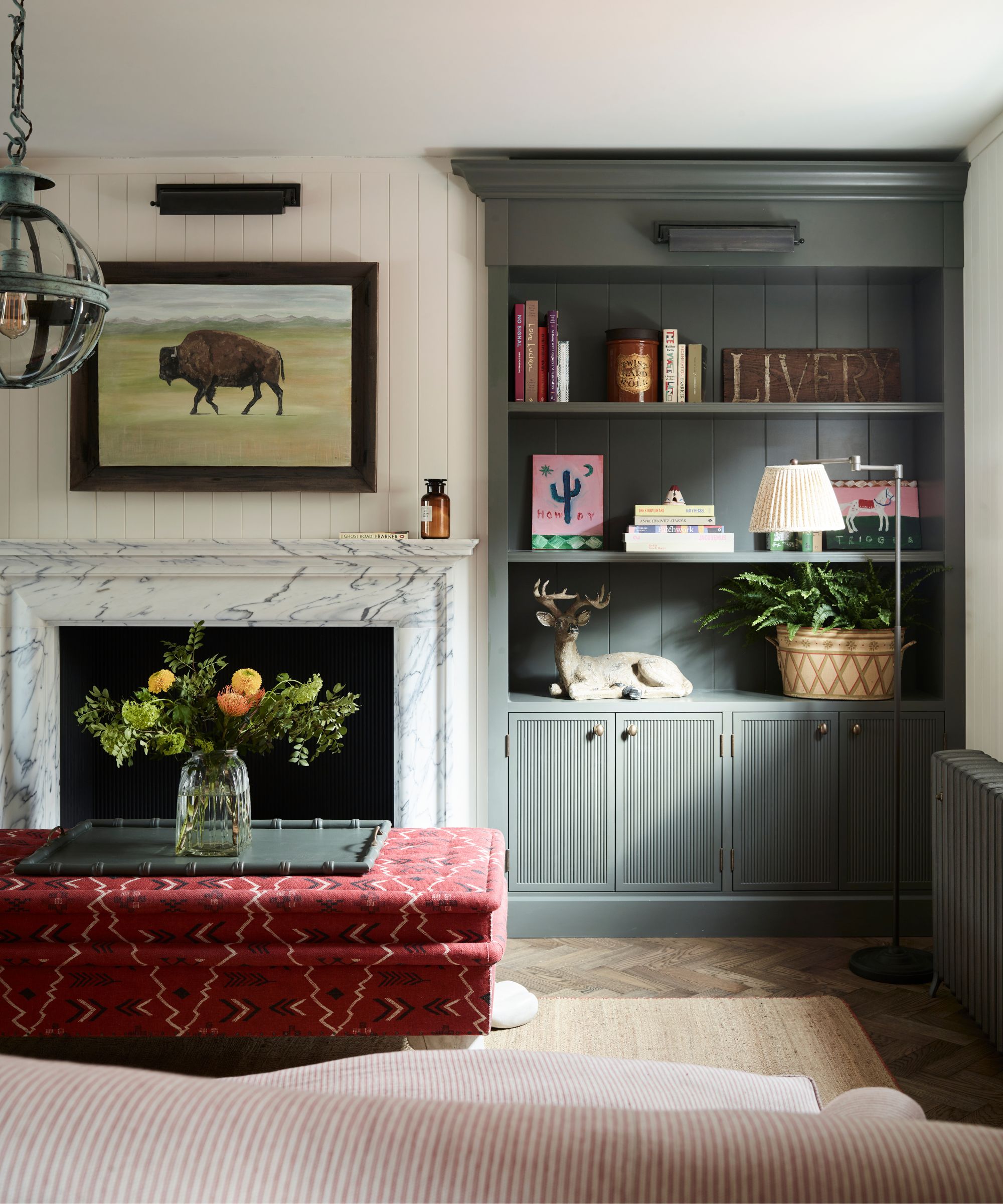
When it comes to maximizing space and adding an element of sophistication to your living room, custom floor-to-ceiling storage is a total game-changer. Not only does it provide a sleek and organized way to store books or electronics, but it also offers the opportunity to integrate decor elements that complement the room’s aesthetic.
'In 2025, living room design is all about blending functionality with beauty,' advises Kelsey Matyas, founder of Kelsey Deirdre Designs. 'Floor-to-ceiling built-ins around the entertainment area offer both ample storage and a stylish focal point.'
'By using sleek materials and clever shelving, you can keep the space organized while enhancing its overall aesthetic – creating a room that's both practical and visually stunning.'
13. Create conversation zones
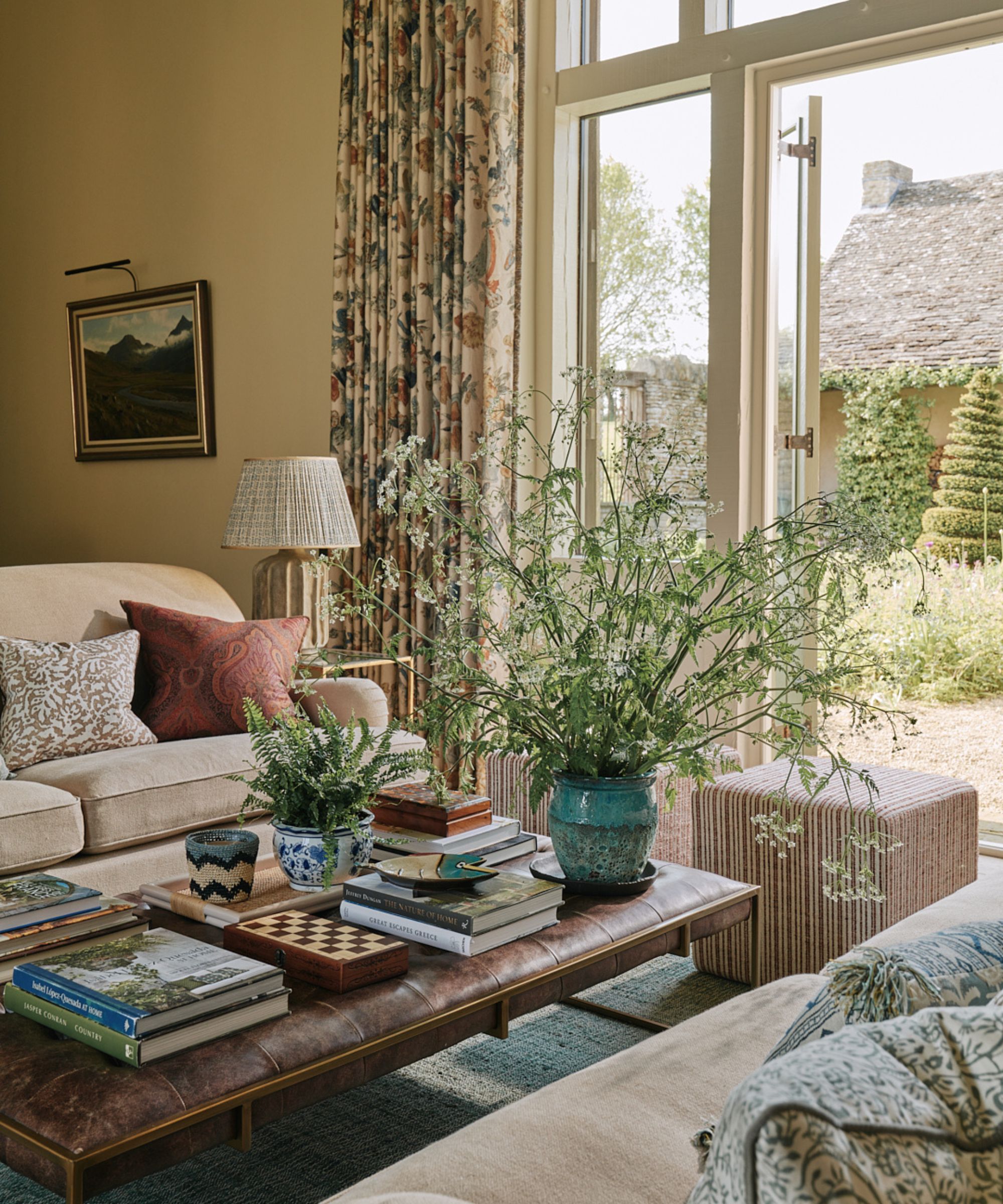
One of the most important aspects of a well-designed living room is how it encourages social interaction. Creating distinct conversation zones within the space can help establish an inviting atmosphere that encourages flow and connection, whether you’re entertaining guests or simply relaxing with family.
By arranging seating and furniture to create natural groupings, you can make the room feel more intimate, functional, and engaging. 'Transform your living room by breaking free from traditional wall-hugging furniture placement,' advises London-based designer Laura Hammett. 'Create conversation zones using floating furniture arrangements, with the sofa pulled away from walls to define spaces.'
Sarah Latham of Latham Interiors adds: 'Sunken living rooms are also making a comeback! Embracing your space for purposeful conversation and entertainment isn't an idea of the past and setting your living room space lower than surrounding rooms is taking shape again.'
14. Bring back closed plan layouts
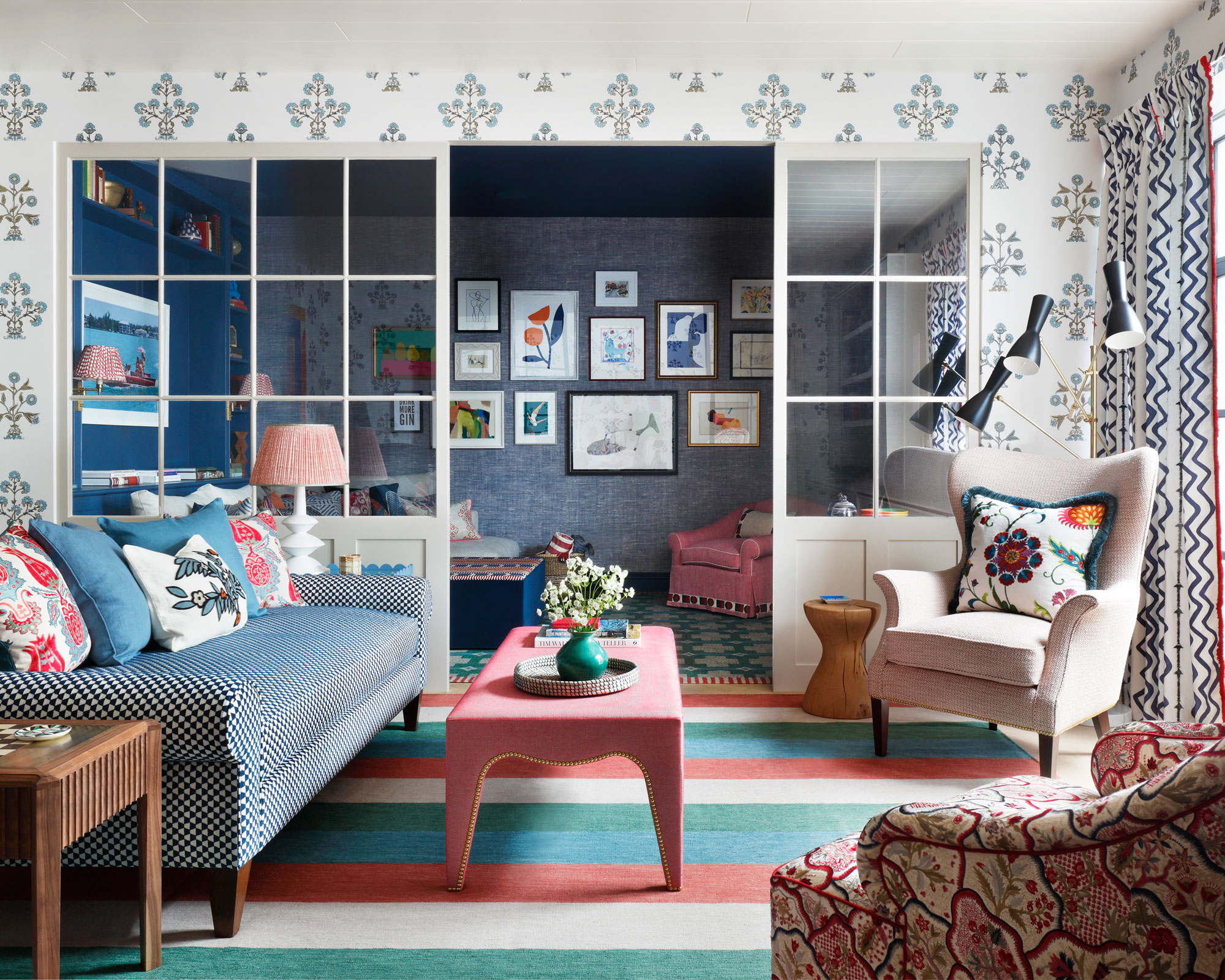
Where once living rooms were somewhere we watched TV in the evenings, they're now invariably sitting rooms, homework studies for kids, home offices for adults and, of course, movie rooms – which is why searches for broken-plan living rooms are rising sharply.
While open spaces offer a sense of flow and light, closed-plan layouts provide a level of intimacy and functionality that some homes crave.
So how to pack this all into one space? If yours is a long living room you can divide it semi-permanently without closing off an area of the room entirely. The smartest, most permanent way to do so is with a wall of glazing, as above, which can include doors – allowing family members some time apart to pursue different activities while keeping the room feeling spacious and open.
15. Avoid focusing everything around the TV
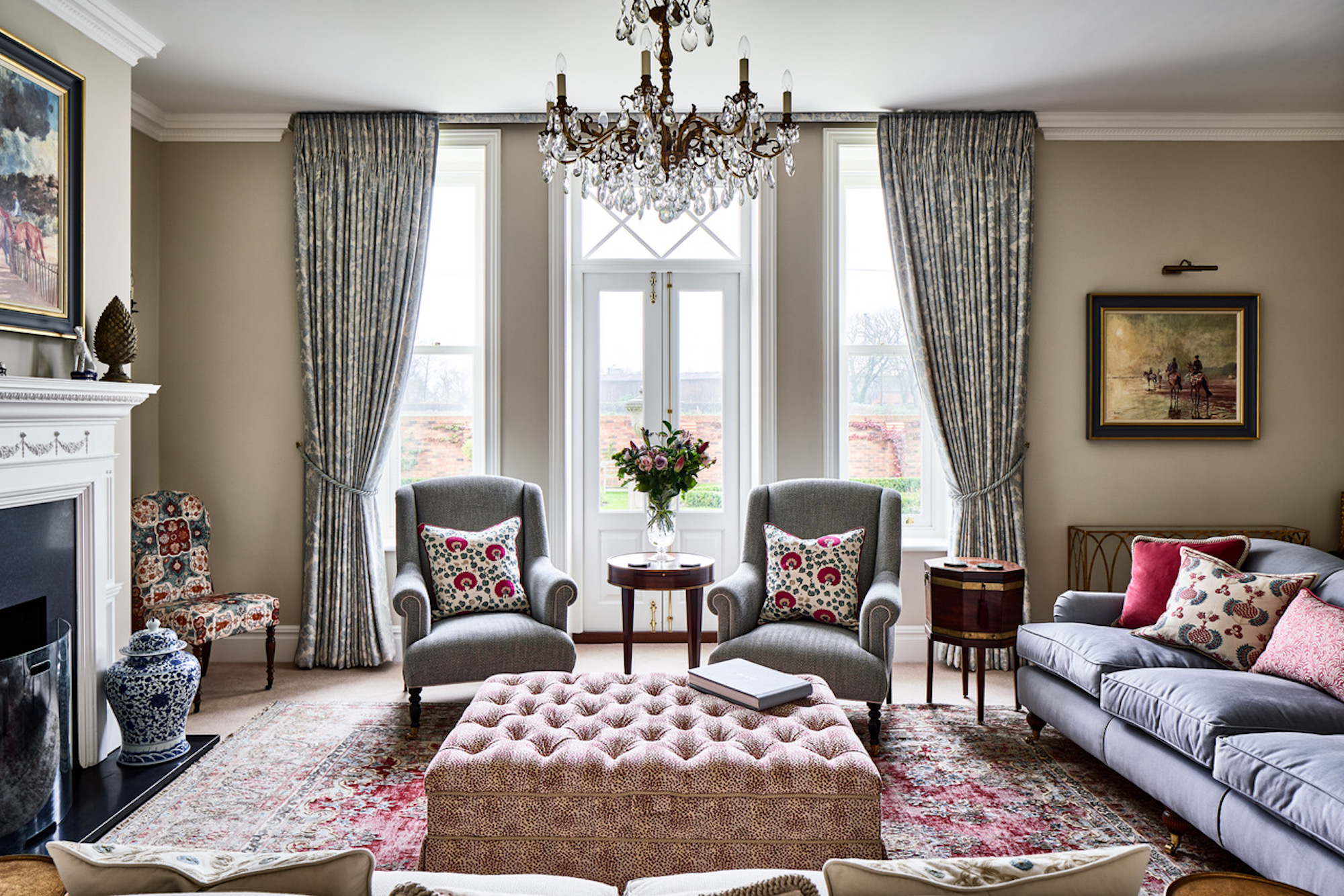
To give you an atmosphere of warmth and welcome, arrange seating for relaxation and conversation – not focusing on the TV. By placing the television off-center or subtly integrating it into custom cabinetry, you can avoid making it the focal point and instead emphasize other aspects of the room, such as art, lighting, or views of the outdoors.
'In this room, the armchairs and sofas face each other across an upholstered ottoman, on which a tray of drinks or afternoon tea could be placed,' says interior designer Jojo Bradley. 'The comfortable furniture is softened further with cushions that invite you to relax and settle in for a while.'
Of course, we all love to Netflix and chill so the TV should be within view of most or all the seating. You can try to stylishly hide the TV with cleverly concealed cabinetry, oversized art, or sliding panels to get rid of the big black box when it isn't in use.
16. Consider wall paneling to give your living room character
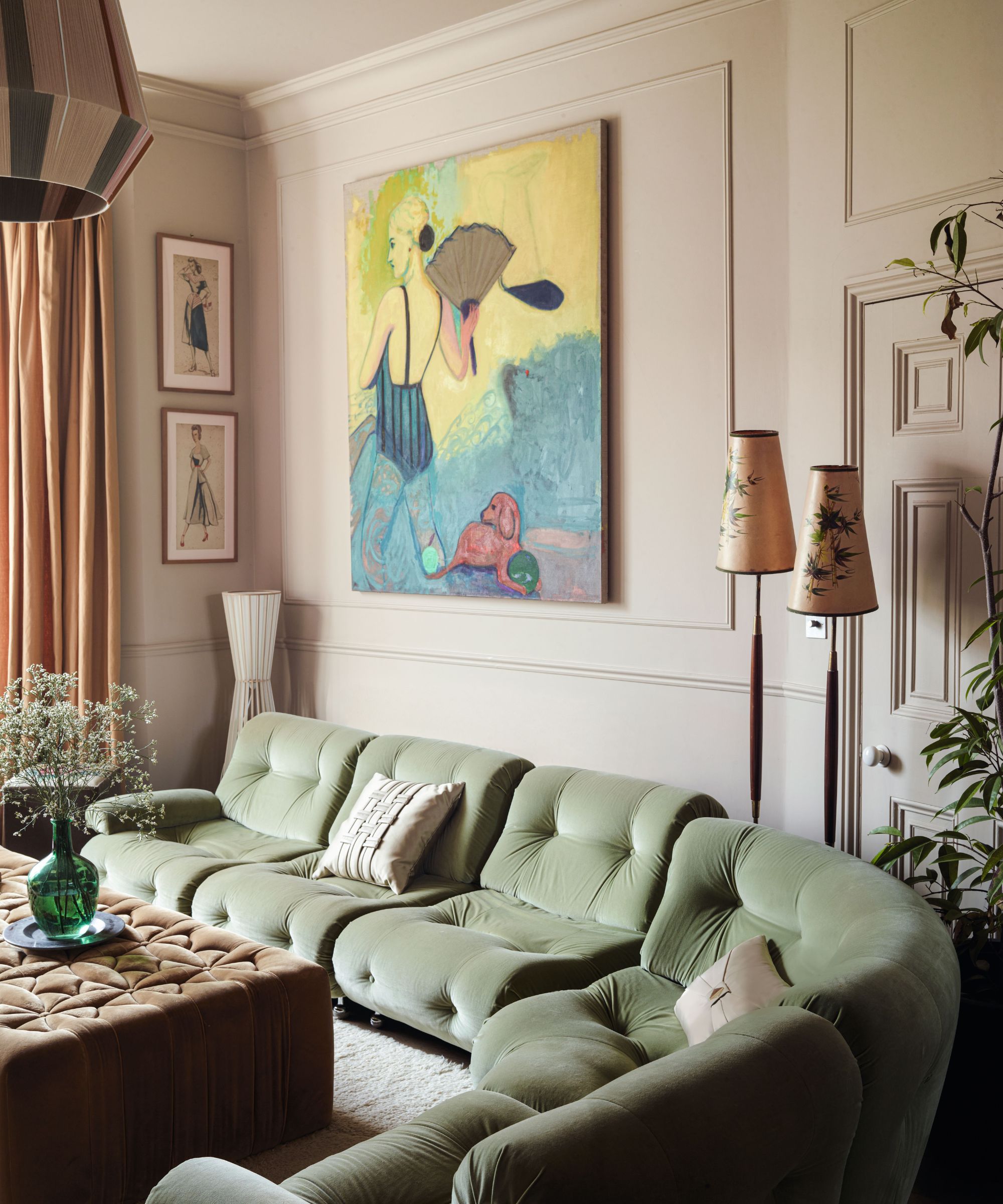
Wall paneling is a valuable asset to any interior design, especially when it comes to living room styling. When used as part of living room accent wall ideas, it adds warmth, texture, and color in equal proportions.
'Paneling is an easy way to add texture, depth, and interest to the walls. Great for all types of properties, especially new builds, as it really helps to add character and interest when architectural features are minimal. This technique is ideal for small rooms when used vertically, as it makes the walls appear taller,' explains Jen & Mar, co-founders of design studio Interior Fox.
From wainscoting and tongue and groove through to board and batten and square, there a plenty of living room paneling ideas that will help you to find the perfect fit for your space.
Living room decor ideas
Decorating your living room is where the fun truly begins – it's your opportunity to add personality, style, and character to the space. The right decor can tie together your room's design, elevate its atmosphere, and make it feel like a true reflection of you.
17. Embrace transitional design by mixing eras
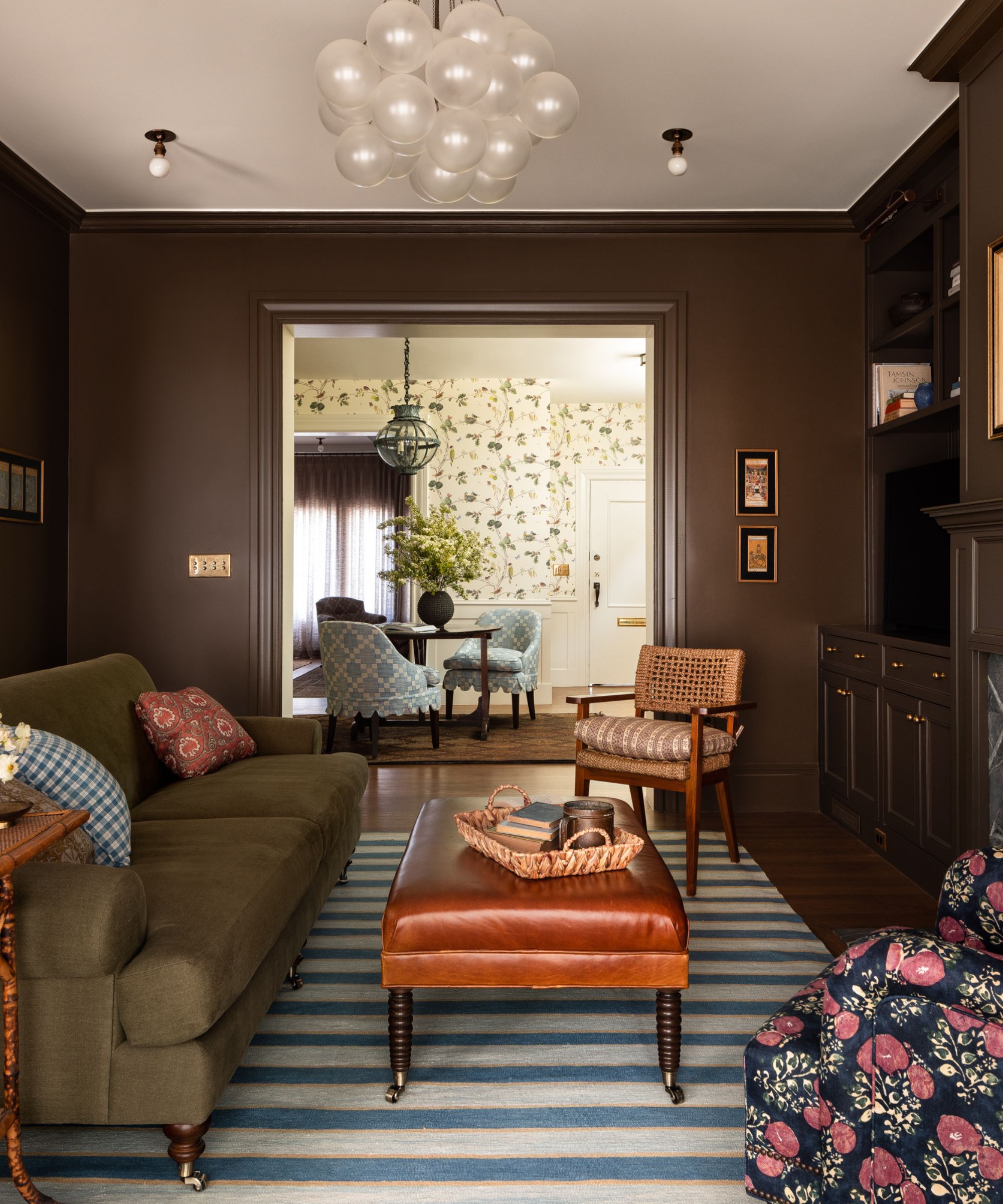
You don't need to have a one-track mind when looking for living room ideas, transitional living rooms that blend old and new are perfect for creating timeless spaces.
Designer Heidi Caillier agrees that decorating with vintage in a living room is key to creating a space that has depth and interest. She explains, ‘We love to incorporate different design styles into our spaces, including mixing new with antique pieces. It helps to make the space feel layered and like it has been around for a long time.'
The key to ensuring that blending old and new never becomes too cluttered or confused is to stick with a relatively neutral base. Here, cozy brown walls are the perfect simple yet not bland backdrop for vintage furniture and ditzy patterns. It's a color that leans into both the traditional and modern elements going on in this living room.
18. Start with statement lighting
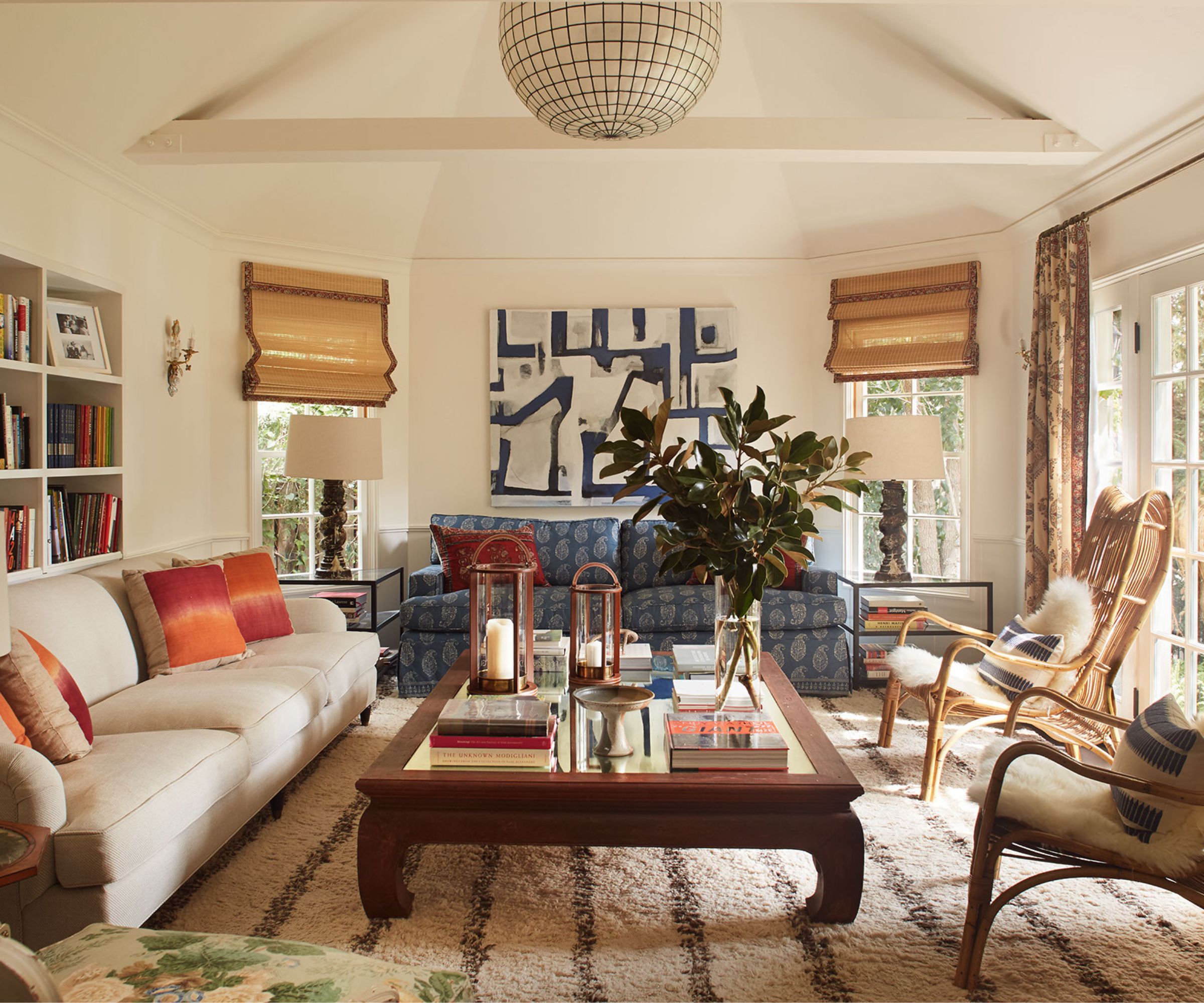
A well-chosen light fixture can elevate the overall atmosphere, add drama, and act as a functional piece of art. Statement living room lighting, in particular, offers an opportunity to incorporate a bold, eye-catching feature that not only illuminates the room but also acts as a defining design element.
'Statement lighting, such as sculptural chandeliers or oversized pendant lights, serves as both a focal point and a functional design element,' agrees Michelle Murphy.
If your living room is large, consider a chandelier or oversized pendant to make a grand statement. For smaller spaces, a sculptural or unique petite fixture can still draw attention without overwhelming the room.
19. Anchor the room with a rug
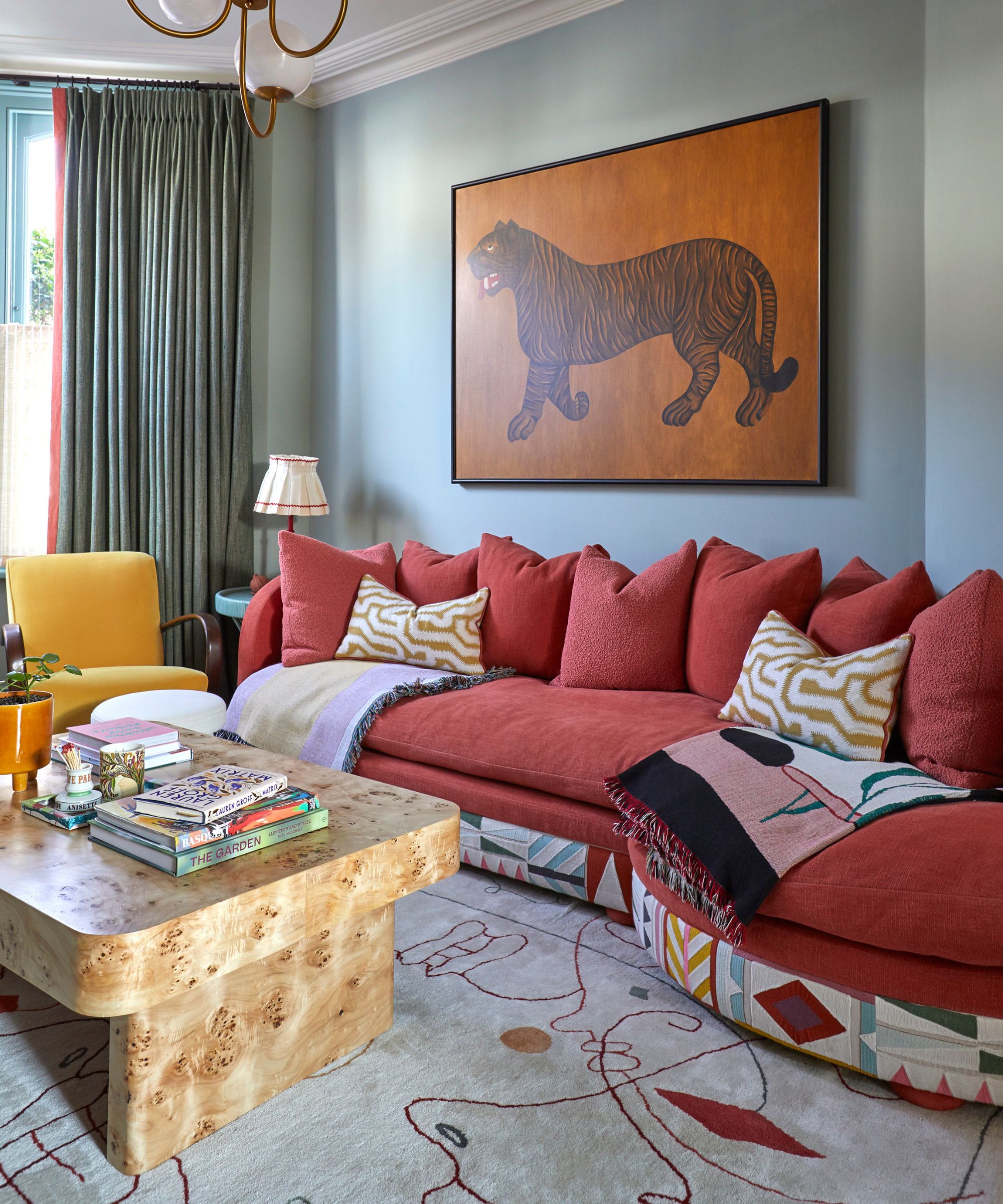
Living room rug ideas add so much to a scheme, including color and pattern. A living room rug really is an essential to the room. Even if you have living room carpet, so don't need that extra softness underfoot, a rug helps ground your space and anchor the furniture.
'Large, plush rugs make any space feel more opulent. Ensure the rug is proportional to the room and that furniture sits comfortably on it. This not only unifies the space but also adds a visual anchor,' explains Marie Cloud, owner and principal designer of Indigo Pruitt Design Studio.
A rug can also do wonders in grounding the space and tying together all the elements of your living room decor. Whether you're working with a large, open space or a smaller, cozier area, choosing the right rug and positioning it thoughtfully can transform the way your living room feels.
'We are all about bold, single-color rugs in 2025,' says Kailee Blalock, co-founder of House of Hive. 'Think deep plum or a rich blue. Instead of playing it safe, why not let your rug be the focal point? Build your room around it, letting that color influence your furniture, art, and accessories.'
20. Bring back beautiful floral prints
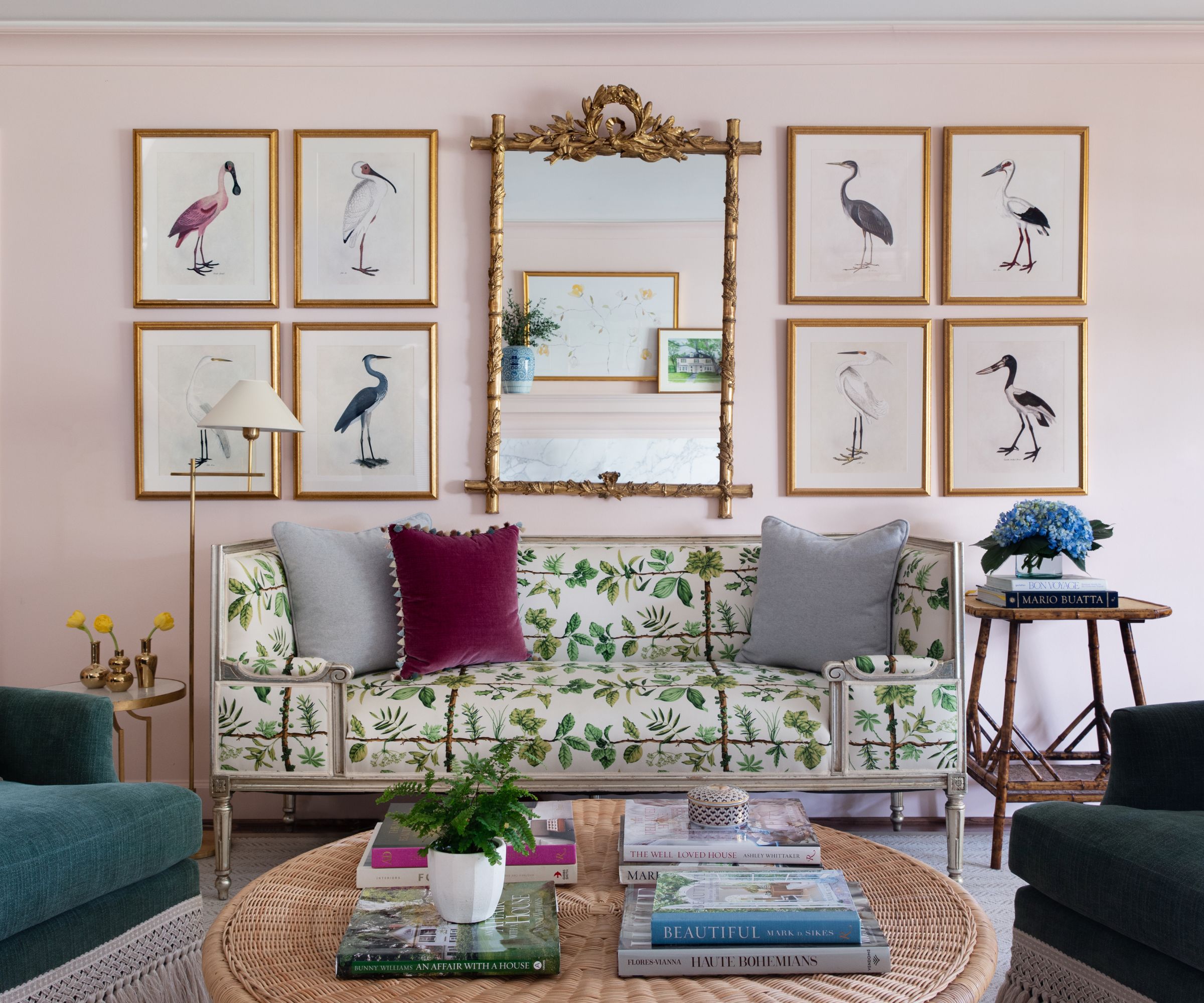
If you're looking for some spring living room ideas, the most obvious place to start is with some fresh spring-ready colors like pastels and nature-inspired hues.
'Painting your walls in a timeless, statement color will elevate your space and keep it cozy throughout the season,' says Holly Vaughan of Vaughan Design & Development.
Then, look to layer in some florals and botanical prints that will help you bring the outdoors in. Florals evoke a feeling of freshness and are a versatile way to infuse color and texture into your living room, effortlessly reflecting the season’s spirit.
This spring, embrace florals in various forms: opt for floral-printed throw pillows, patterned rugs, and light, airy curtains that let the sun filter through.
21. Balance your living room with symmetry

Symmetry in interior design is usually introduced to create a balanced, calm space that's perfect for a living room that you want as a retreat.
Whether you’re arranging furniture, incorporating decor pieces, or considering wall art, symmetry can help create a space that feels balanced and pleasing to the eye.
Symmetry doesn’t necessarily mean everything has to match perfectly, but it’s about creating balance. For example, flanking a sofa with identical side tables and matching lamps can provide a sense of equilibrium. Likewise, a central piece of art or a mirror above the fireplace can anchor the space, drawing the eye to a focal point and offering a pleasing visual rhythm.
22. Or use asymmetry for a more dynamic feel
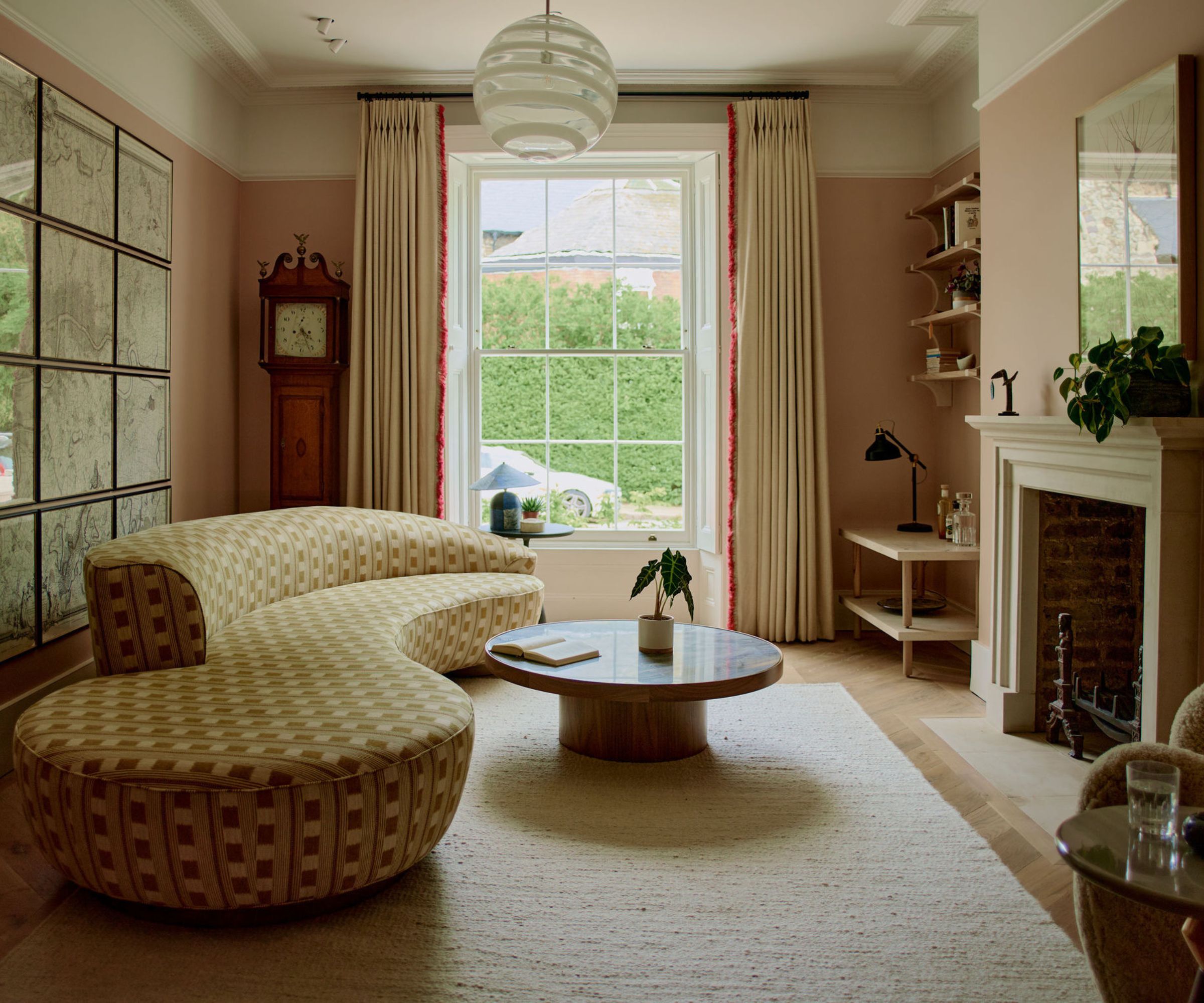
While symmetry offers a sense of order and calm, asymmetry can inject energy and personality into your living room.
'Eclectic layouts that avoid symmetry will prove to be more eye-catching, and avoiding matching furniture will lend to a more curated aesthetic,' explains Brandon Lange, Creative Director and Principal Designer of BZ Interiors.
When done thoughtfully, it’s an exciting way to break the rules and add some real flair to your design. For example, a large curved sofa can be paired with an eclectic mix of side tables or a single oversized chair, creating a playful yet sophisticated vibe.
23. Add impact with a bold wallpaper
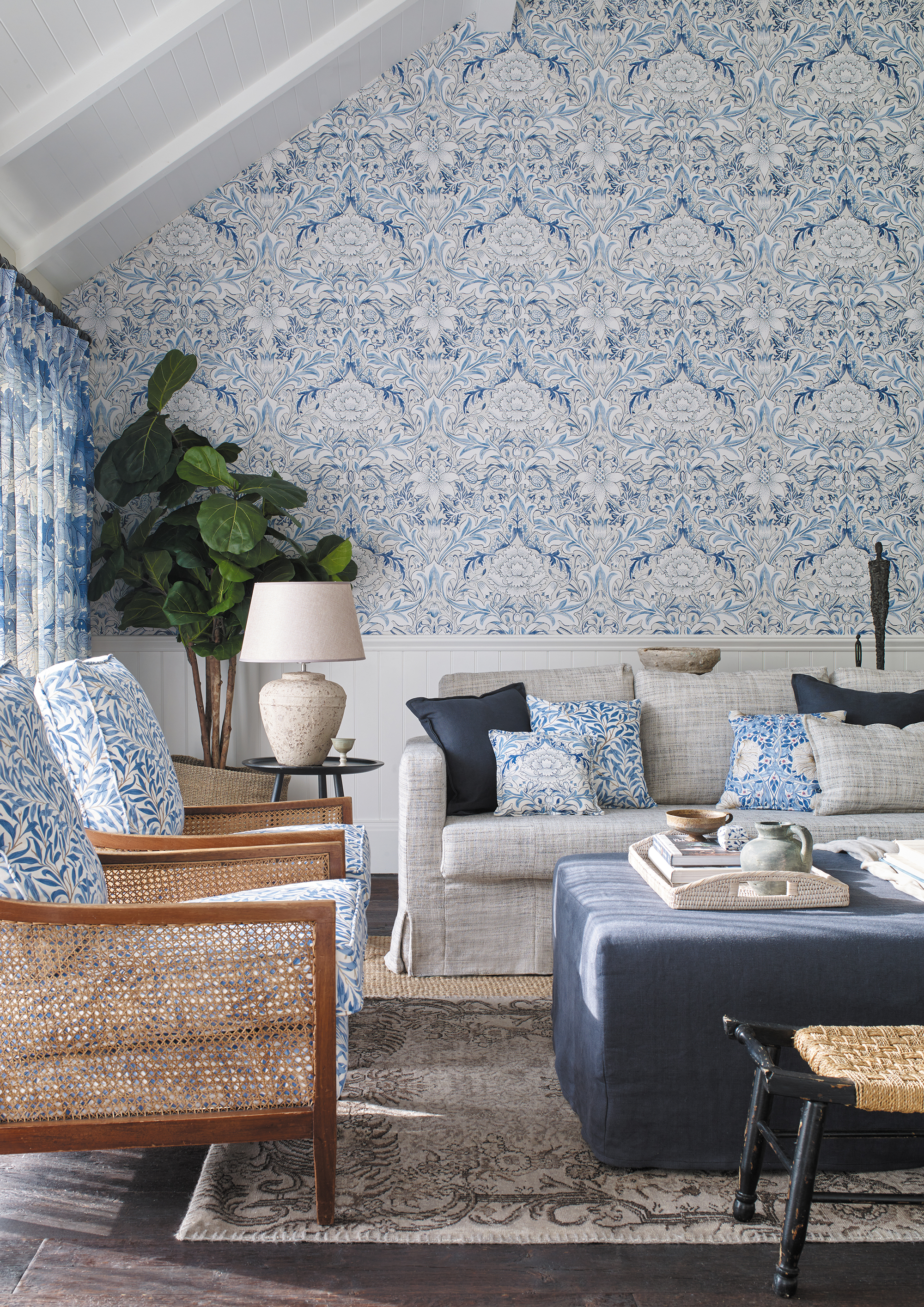
If maximalism is your thing, bold living room wallpaper ideas, like the one in this living room by Morris & Co., are a good way to create a space that feels eclectic, lively, and fun.
Choosing a pale green or blue for a maximalist design is a good choice for a living space – it will tone down the effect of the pattern to create an overall much calmer feel.
‘For a playful living room, go for a vibrant printed design on your furniture. If you’re not brave with pattern, choose a plain, hardwearing woven fabric and add some stylish cushions,’ says Hayley McAfee, design director at Villa Nova.
24. Create a flow between an entryway and a living room

Living room flooring sets the scene, so it is a very important starting point for a living room design. Whether you prefer hardwood, stone, tile, or carpet, the right flooring choice can enhance the aesthetic and practicality of your living room. The easiest way to create a flow throughout your home is to link rooms with the flooring.
‘Usually, I begin thinking about the entryway floor,’ remarks Sean Cochran, creative director of Cochrane Design. ‘For instance, if I’ve used straight wooden boards along the length of the hall, I might use parquet in the same tone and finish in the living room.’
25. Employ layered lighting for ambiance
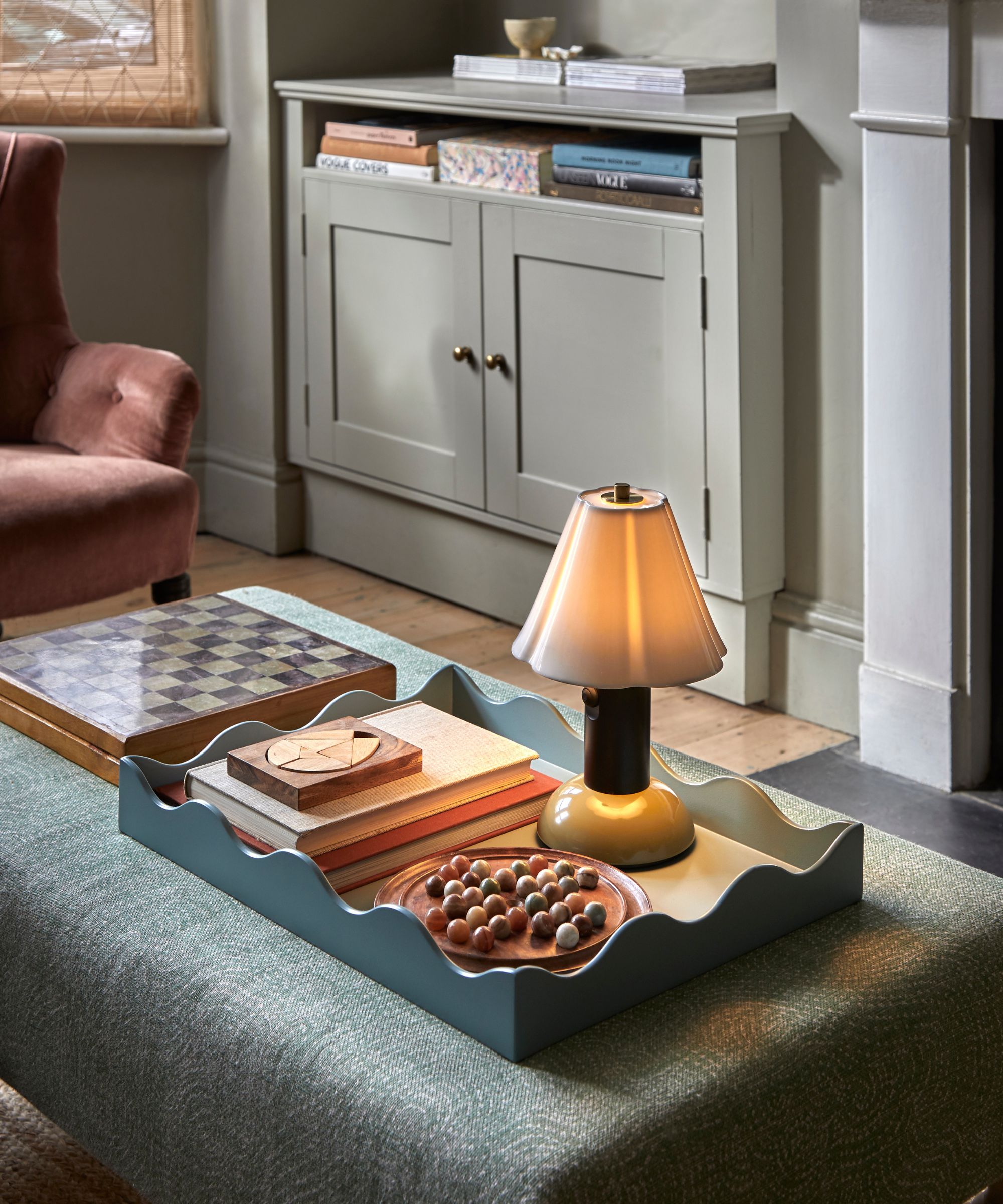
Lighting is one of the most powerful tools in interior design, and in a living room, a well-thought-out lighting scheme can completely transform the atmosphere.
Instead of relying on a single overhead fixture, layering different sources of light – ambient, task, and accent – creates a dynamic, inviting space that feels both functional and cozy. Try adding some portable lamps, like this one above by Original BTC, to move around your room and help illuminate shelves, side tables, or your ottoman.
'Layer your lighting with a mix of overhead, task, and ambient sources rather than relying on a single central fixture,' adds Laura Hammett.
26. Let artwork spark the scheme
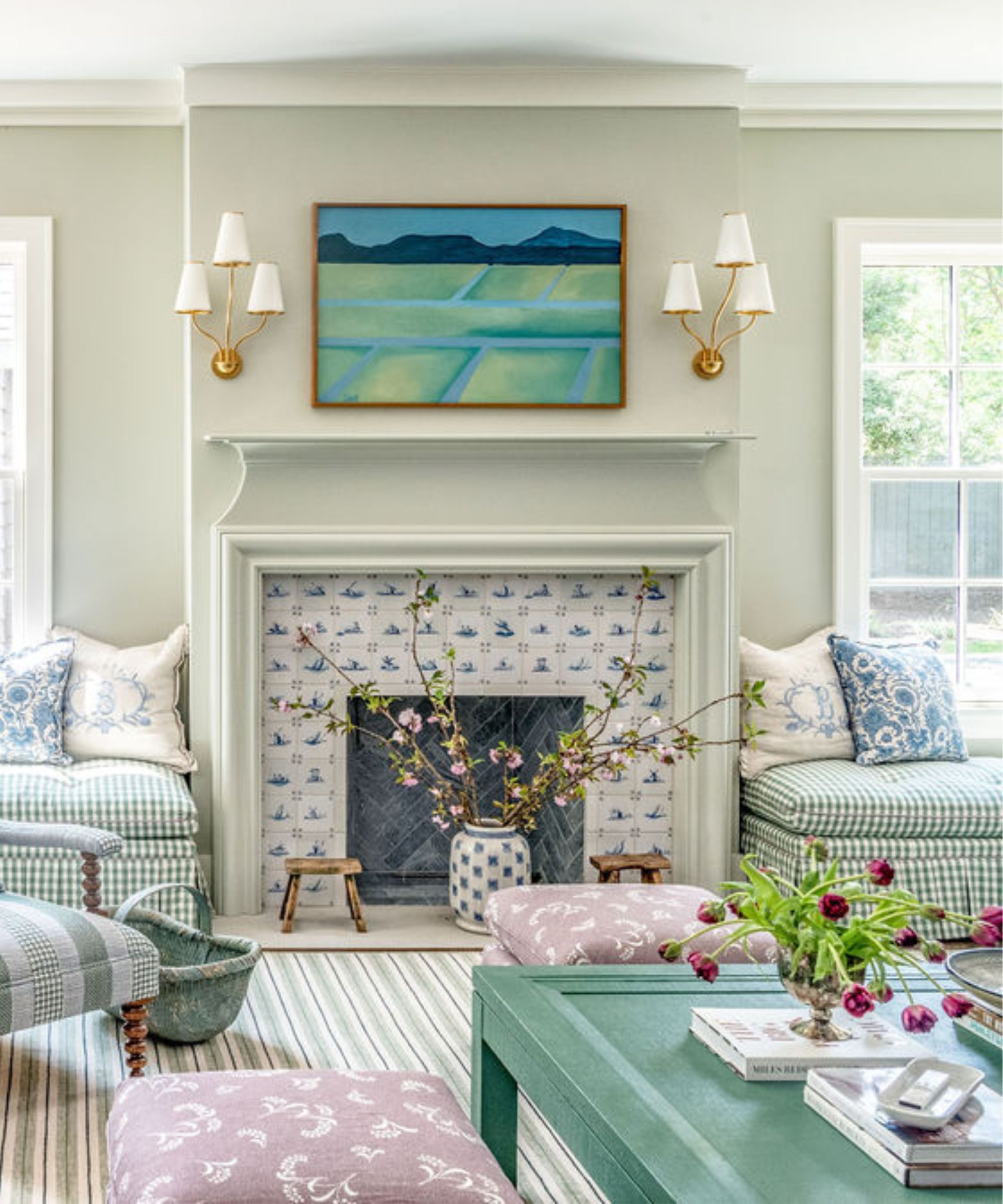
More often than not, we choose our living room art ideas at the end of the decorating process, but actually, a favorite painting can be used as your starting point, as Cath Beckett, Co-Founder of British Interior Design Studio, Yellow London explains:
‘We often start with artwork our clients choose or already love and extrapolate a wider scheme from there, drawing out striking paint colors to create harmony within the room. Art is so personal, but if it is a piece that really speaks to us, it is a great place to start a scheme as it will say a lot about a client’s general style and color preferences. Once we have those details decided, complementary upholstery and the softer details will flow more naturally to create a cohesive and beautiful scheme.’
Adding artwork is also an excellent way to make your living room look expensive without costing the earth. Pull colors from it, echo its textures, and let it influence your furniture and decor choices for a cohesive, considered design.
27. Always try and maximize natural light
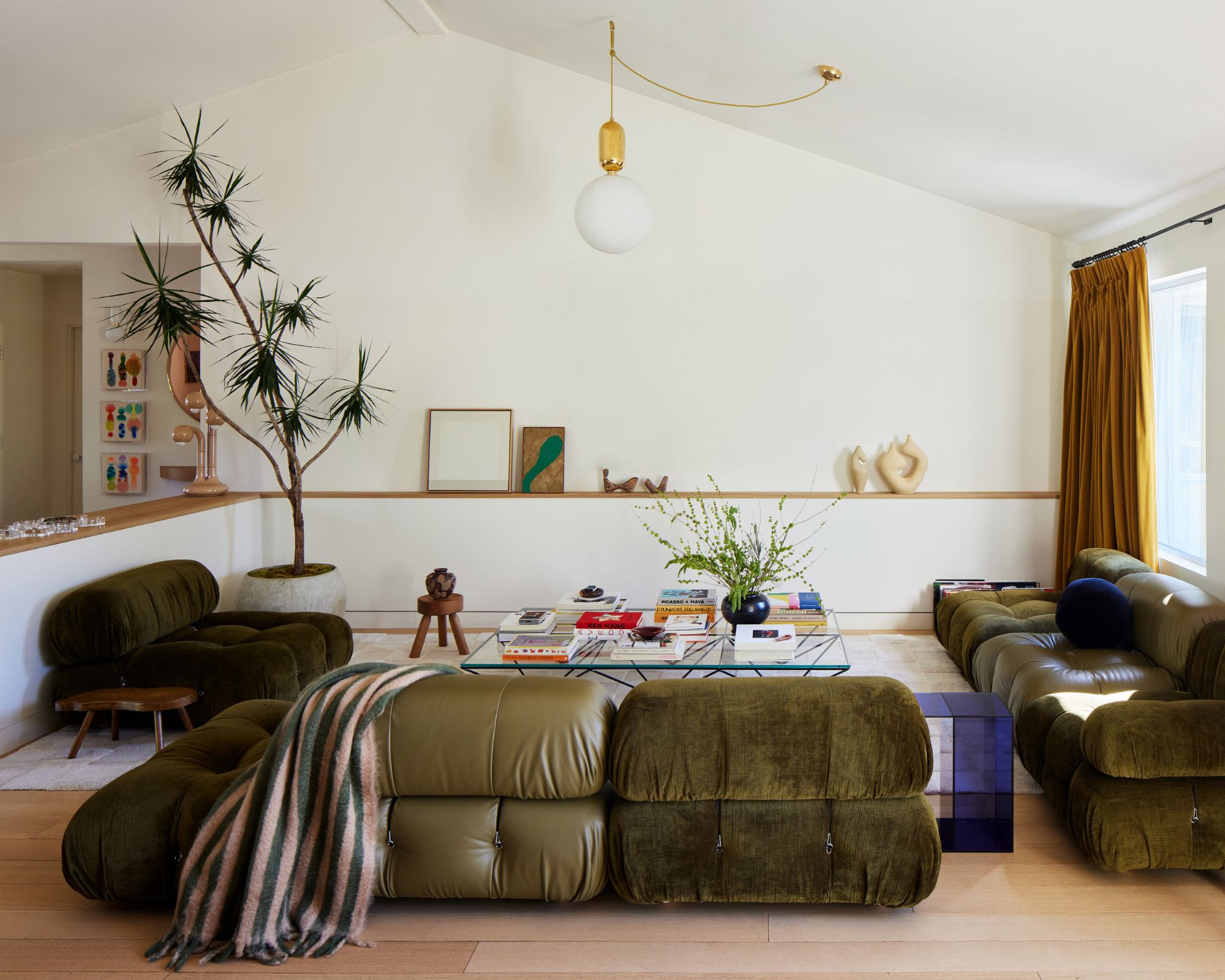
Natural light is one of the most valuable elements in any room as it can help to make the space feel brighter, larger, and more inviting. Whether your living room is bathed in sunlight or naturally dim, there are strategic ways to make the most of the light available.
Positioning furniture, choosing reflective surfaces, and using the right window treatments can help harness daylight to its fullest potential.
‘A quick and easy way to turn your window into a decorative feature is to introduce trimmings to existing curtains. For patterned curtains, find a trim that complements the print and use it to add an interesting border, whilst with a plain fabric, you can have a bit more fun, use the trim to create a stripe effect across the fabric, creating a unique design feature,' explains Hayley McAfee.
28. Take notes from the quiet luxury trend
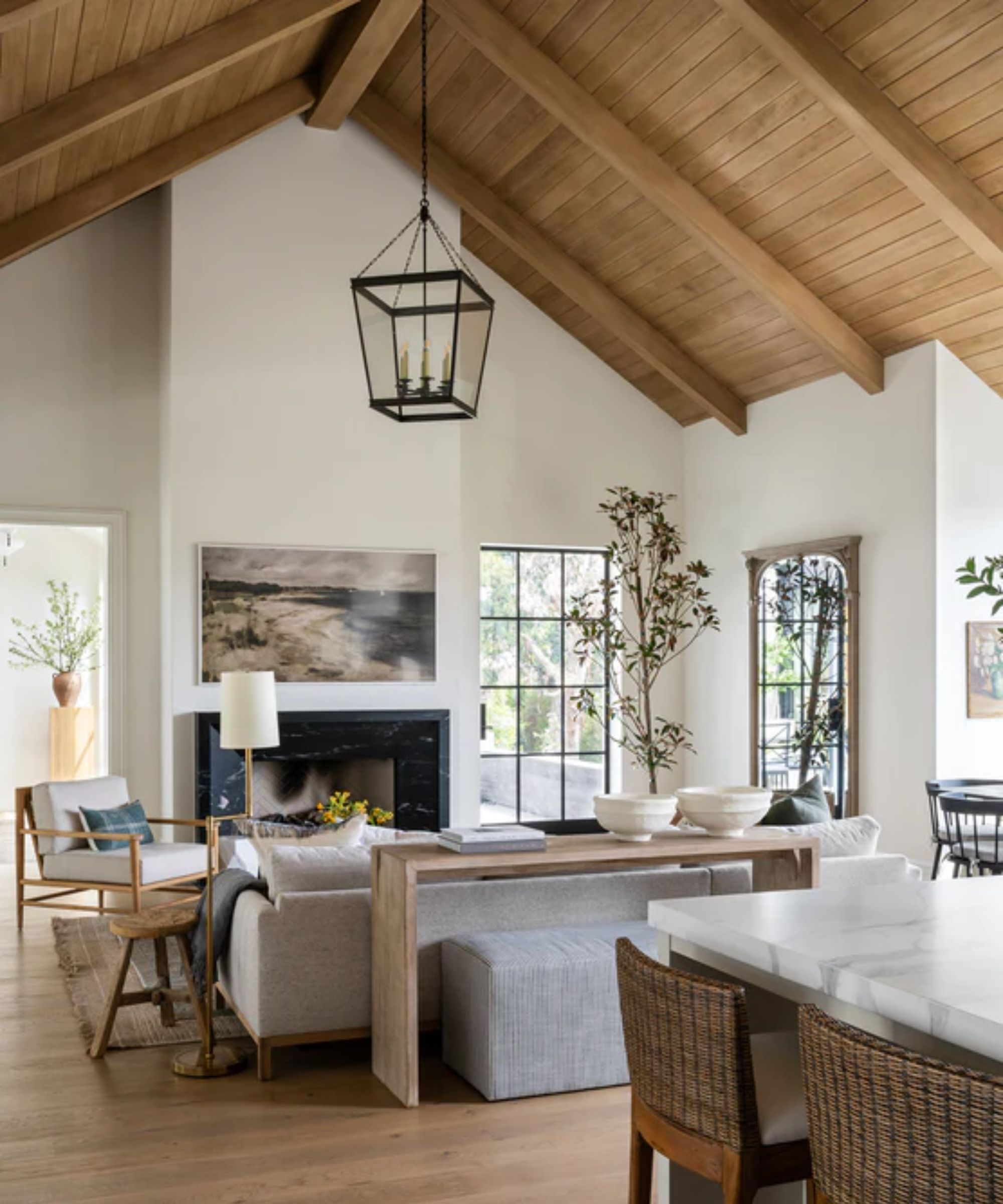
Alongside all the clamor of color, pattern and shape in current interior design, there’s a quieter story of considered, understated forms and textures at their finest. Think quiet luxury, but even more timeless.
Dress your scheme in simple linen or silk, sleek metal, rich wood, and polished stone to bring elegance and timelessness to interiors, placing them above and beyond seasonal fads.
Here, polished concrete flooring offers a smooth, subdued contrast to organic-shaped furnishings, while a smart grasscloth wall covering lets dramatic artwork do the talking.
29. Introduce some dynamic stripes
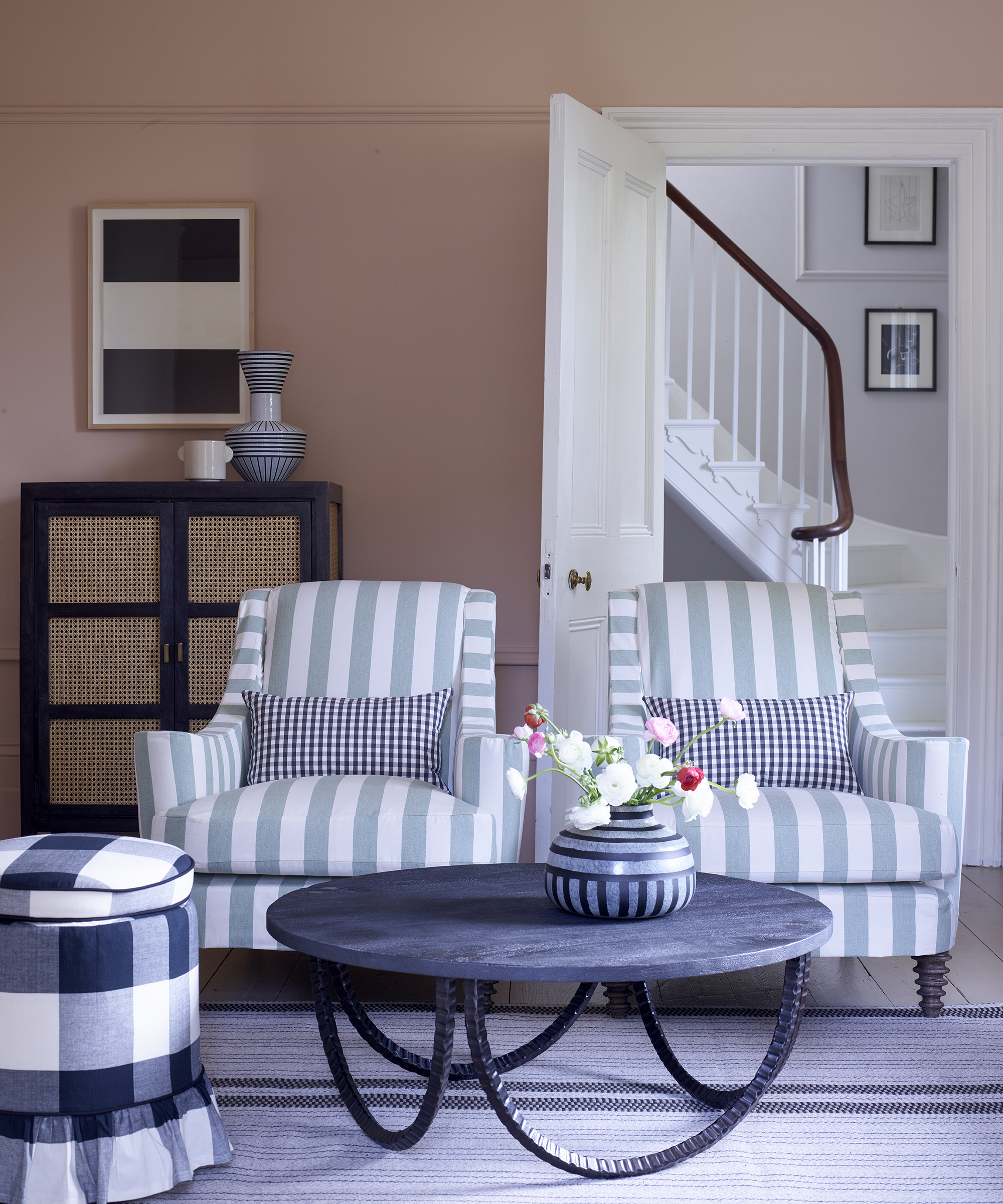
Stripes are a classic design element that can add energy, movement, and personality to your living room. Whether bold and graphic or soft and subtle, they work beautifully whether you’re going for a coastal vibe with navy and white, or a more sophisticated look with muted tones.
A plain room can look utterly different if you add in some brave upholstery – here, an otherwise neutral living space has been given a touch of classic glamour with upholstery in broad stripes.
Decorating with stripes like this can also play with a room's proportions – putting them vertically on upright chairs will make the chairs look taller and narrower, creating a subtle focal point in the room.
30. Decorate with pockets of greenery
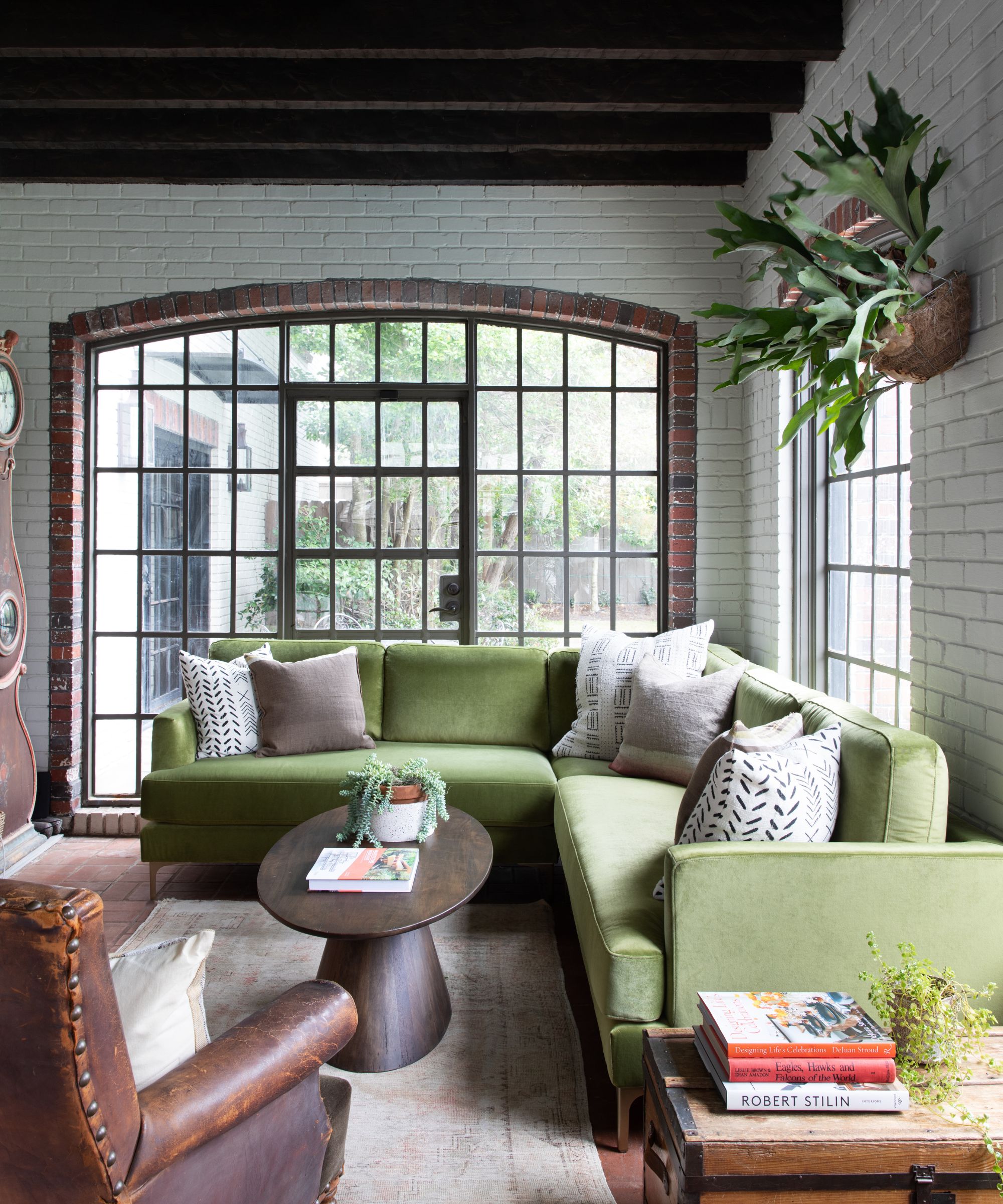
Plants are the answer to a living room that needs some vibrancy and color. The beauty of decorating with plants is the variation they give a room, providing pockets of freshness and contrast.
A tall money tree in the corner of your living room will tick all the color and texture boxes while providing some variety in terms of dimension. Equally, a spider plant placed at the center of a coffee table will create impact and give the scheme a fresher, organic feel, bringing the outside in.
House plants are proven to reduce stress and often make a living room feel more inviting and homely, encouraging lounging and relaxing at all times of the day.
31. Line a nook with wallpaper
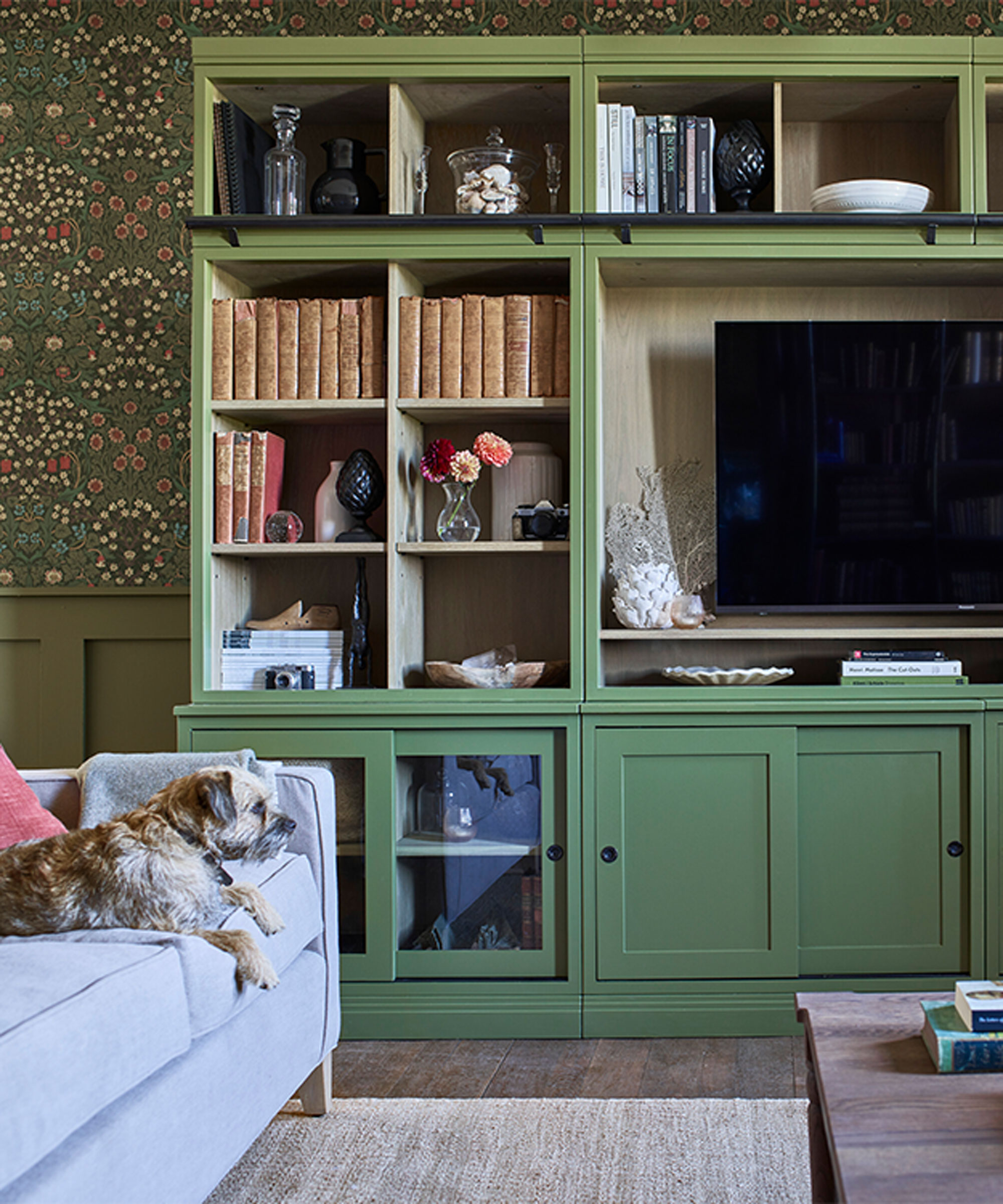
While you can't beat a living room feature wall, a nook or alcove covered in a playful print provides impact and highlights architectural points of interest in your living room.
Mindy Kelson O’Connor says, 'Wallpapering a whole room can be costly to install or remove, but typically the amount of paper and labor needed to cover the back of a built-in or freestanding bookshelf is minimal. Wallpaper patterns and colors offer endless and beautiful options for bringing color into a room. The entire palette can be changed or defined with one bold choice in this way, and then the larger furnishings in the space can remain subtle.'
If your living room lacks original period features, wallpapering a bookshelf can provide a similar sense of drama and character.
32. Create a statement by pattern drenching
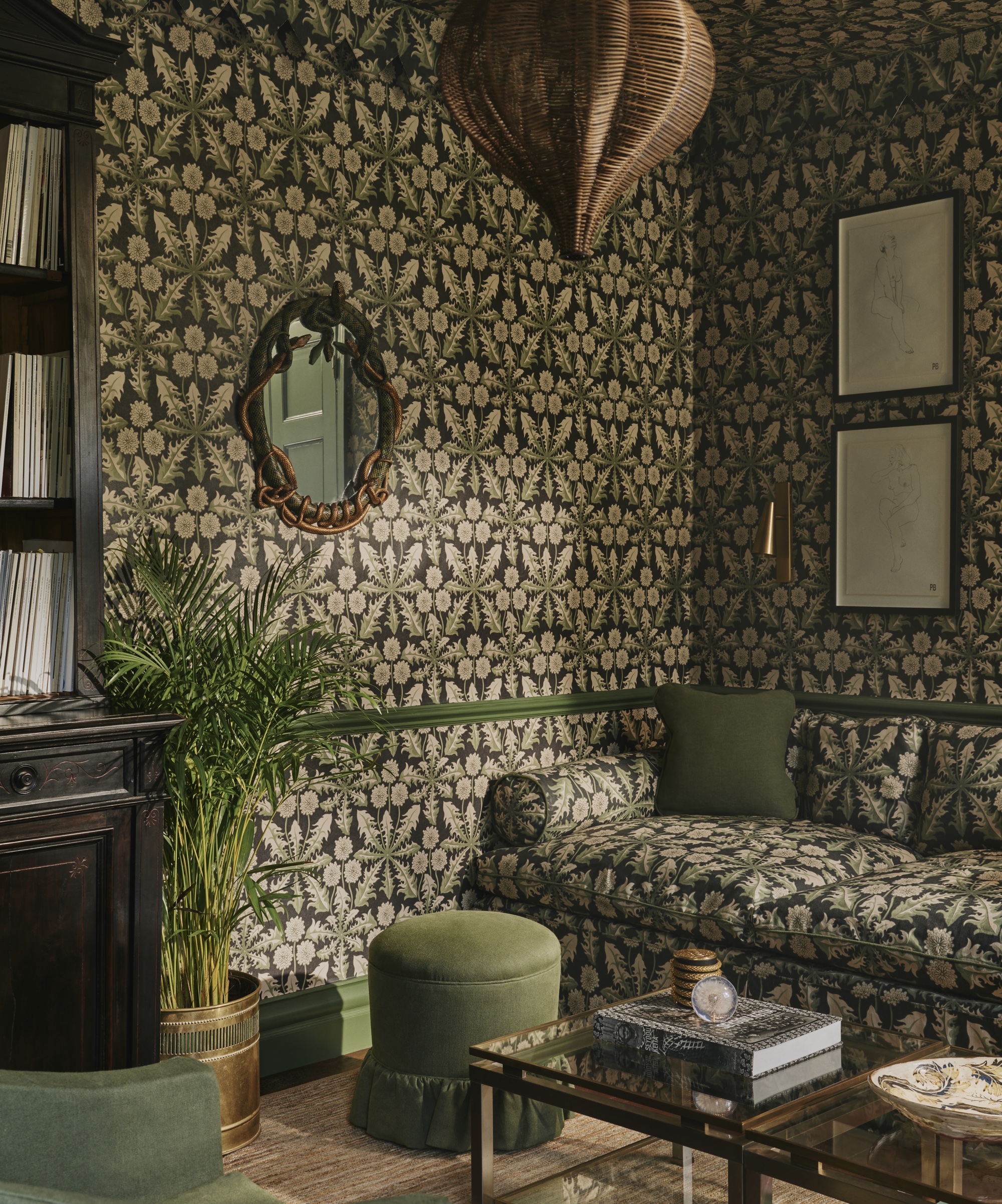
The pattern-drenching trend has proven to be popular over the past year. Although a statement, a living room covered head-to-toe in a vintage print undoubtedly feels welcoming and characterful, enticing you to take a seat and admire the design.
Caroline Aston, UK Interior Design Executive of House of Hackney, says, 'Drenching the space in a single or a few carefully selected patterns can create a cohesive and confident look with major impact. Picking a tonal print can also create a tranquil feel and is not dissimilar to drenching the room in a single color.'
She adds, 'If you are taking the print onto the ceiling, consider a non-directional print to avoid it looking upside down. I would consider countering the print with block colour on pieces of furniture or accessories, or use a complementary paint on architectural features and doors.'
33. Hang a vintage tapestry
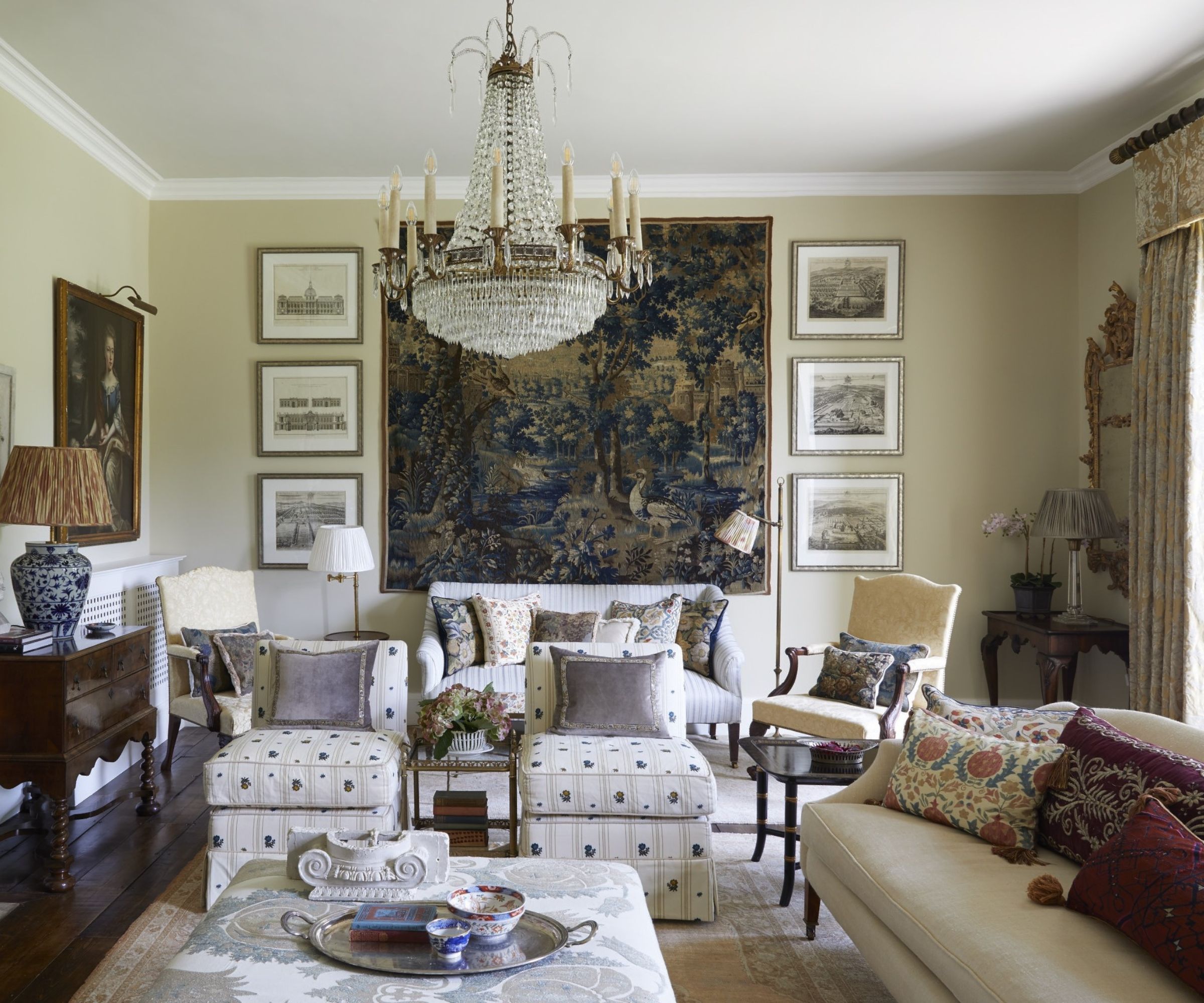
Decorating with tapestries is an age-old way to bring texture and pattern to a scheme. Uplifting an empty wall, a vintage wall hanging gives a room a sense of age and grandeur that pairs beautifully with almost any living room style.
There are endless benefits of tapestries. They transform a blank canvas into a feature without committing to painting a wall mural, while also providing warmth and coziness by wrapping the living room in a layer of fabric.
The tapestry is the central focal point in the living room pictured above, giving the space impact and drama that ties in with the rest of the vintage decor.
Living room furniture ideas
The right living room furniture ideas can completely transform the look and feel of your room, making it not only stylish but also functional and inviting. From statement sofas to smart storage solutions, every piece should serve a purpose while contributing to the overall aesthetic.
34. Warm up a monochrome scheme with wood
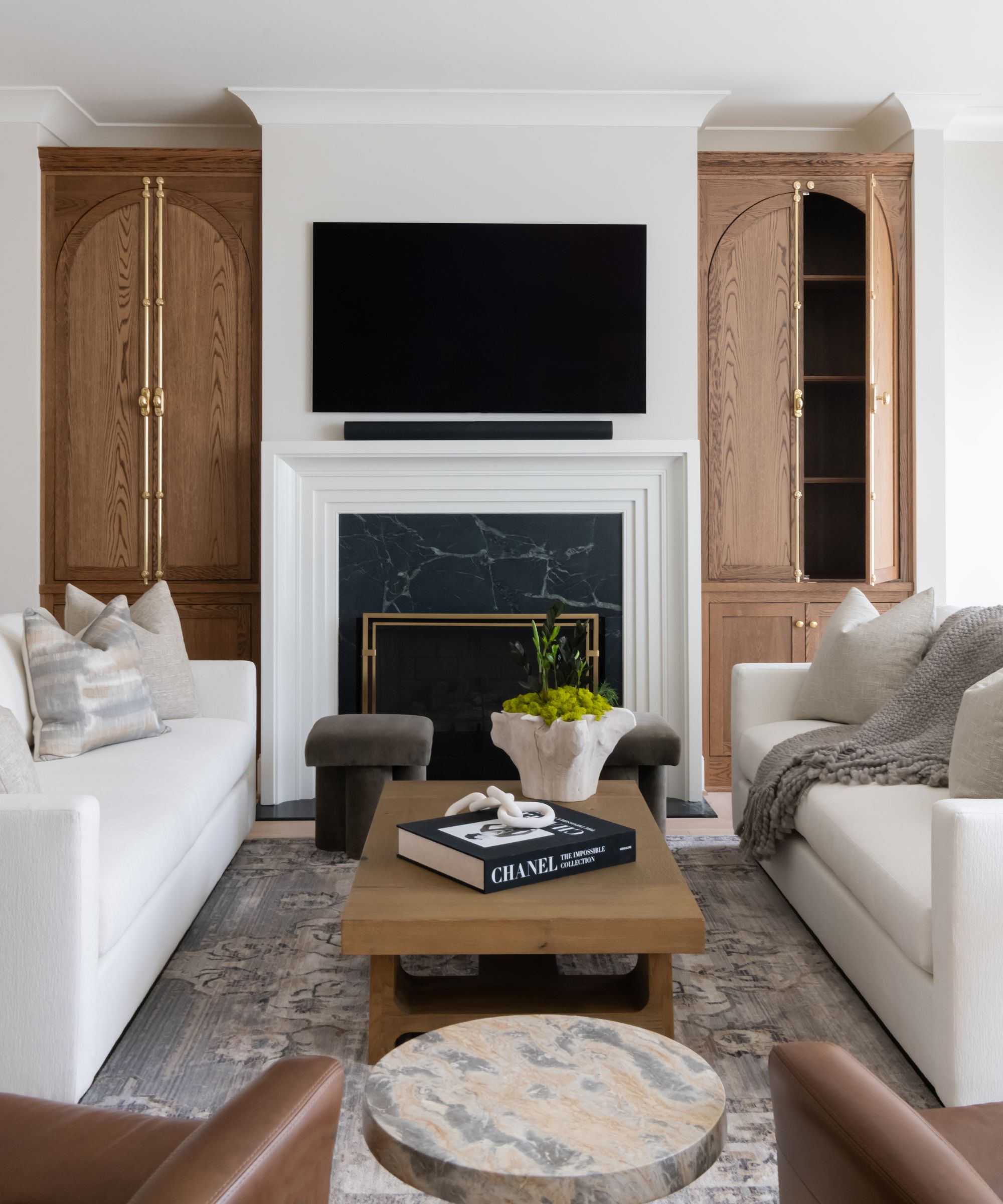
A monochrome living room can feel effortlessly sophisticated, but without the right balance of texture and warmth, it risks appearing flat or uninviting. I
Introducing wood elements is one of the most effective ways to soften and enrich a single-color scheme, adding depth, warmth, and an organic touch to the space. If your living room features a neutral or all-white palette, consider incorporating wood with a coffee table, shelving, or a storage sideboard. Even small details, like picture frames, sculptural bowls, or a vintage stool, can help break up the uniformity of a monotone design.
Whether through furniture, flooring, or decorative accents, wood brings a sense of grounding that helps create a more welcoming and balanced environment.
35. Invest in custom upholstery
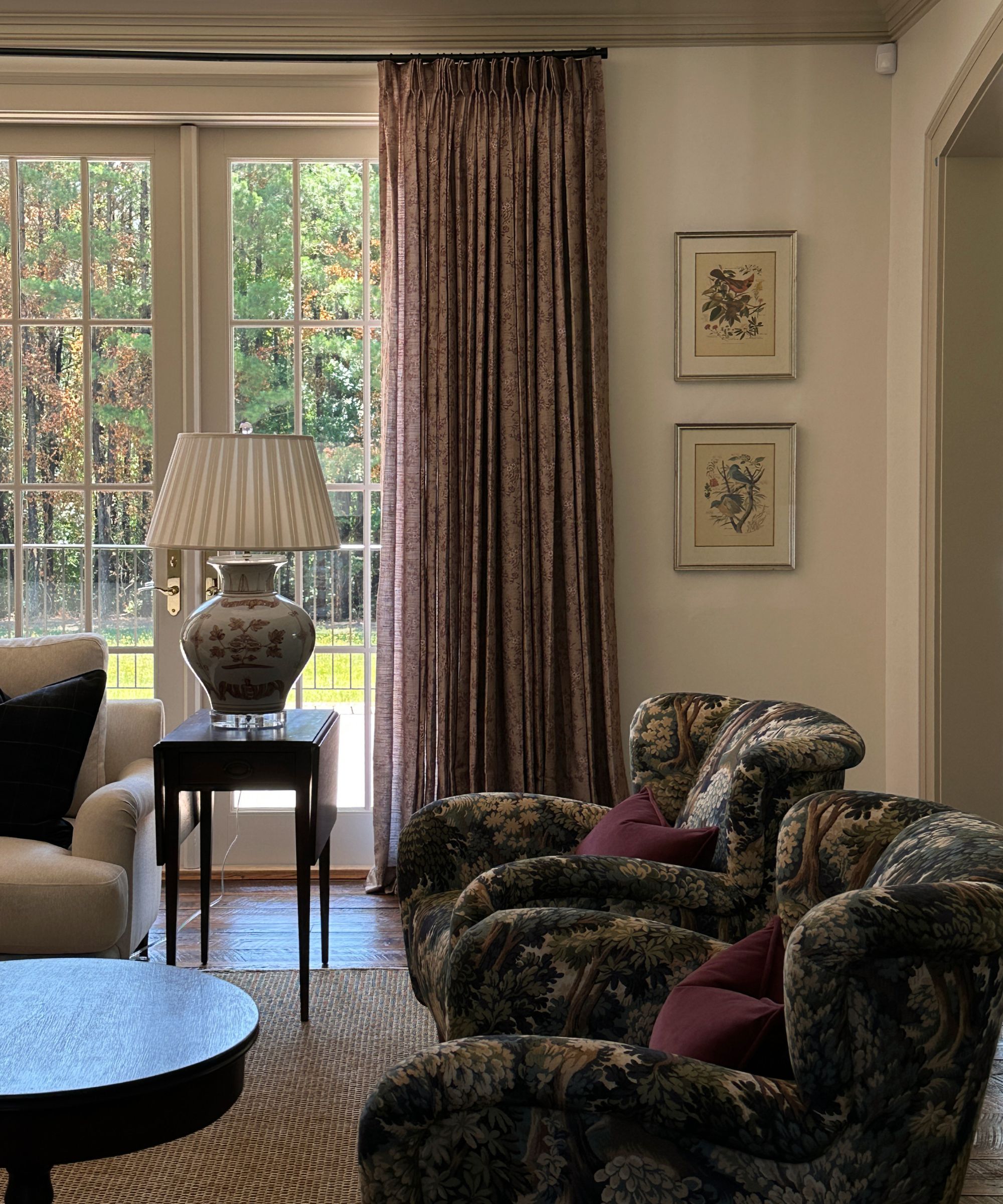
Not only does custom upholstery allow you to select the perfect fabric, texture, and color to suit your design vision, but it also ensures a tailored fit for your space, making every piece feel intentional and unique.
In 2025, interior designers are increasingly turning to custom pieces to create spaces that reflect individual styles while ensuring longevity and comfort.
'My No. 1 tip for elevating your living room design is to invest in a custom upholstered sofa or armchair,' says renowned interior designer Kathy Kuo. 'Anchor furniture that truly reflects your lifestyle and design vision is going to make such a difference in the overall aesthetic and mood of your living room, and you'll be assured that you'll love it for years to come.'
36. Shop vintage for an old-meets-new feel
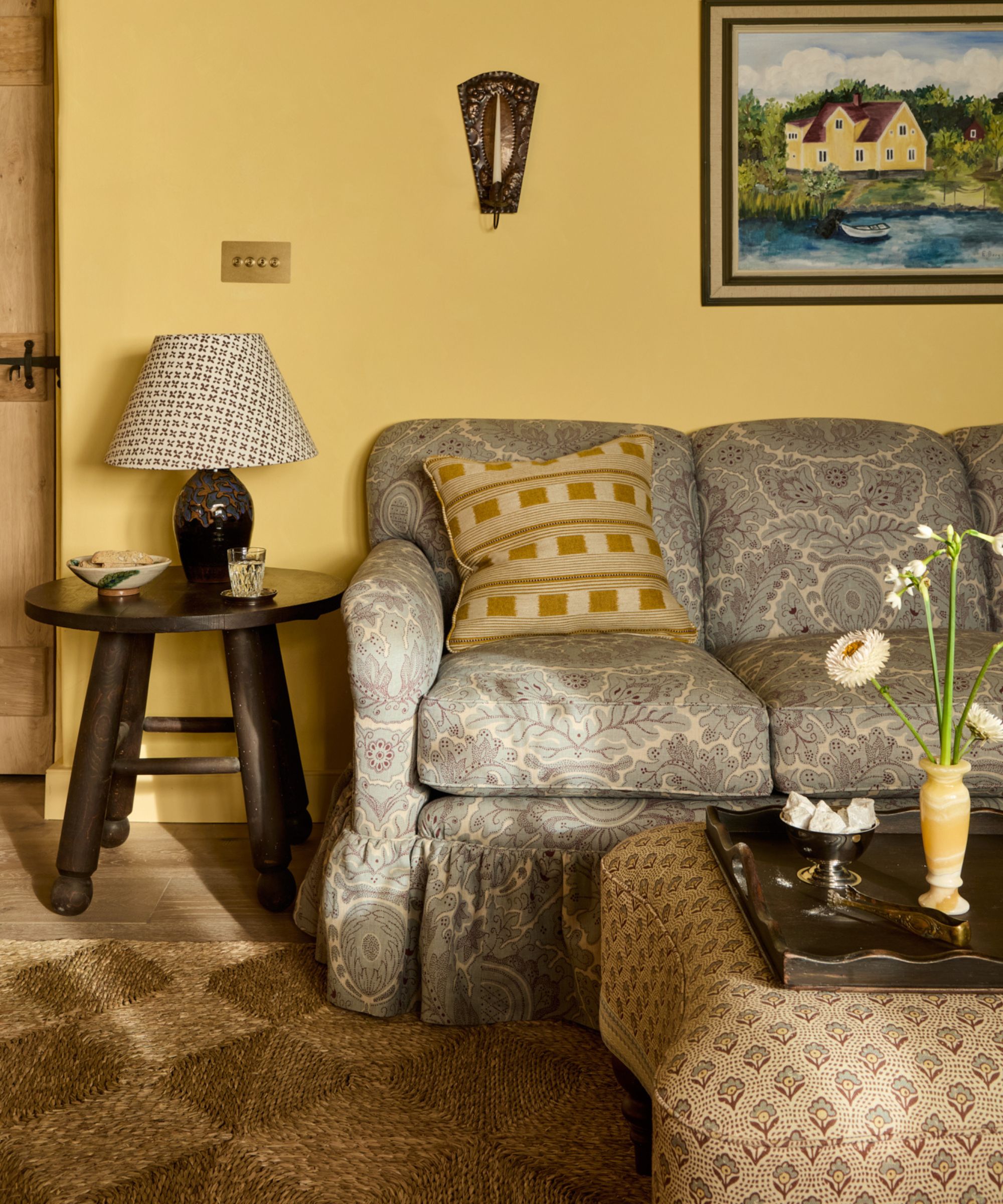
Blending vintage furniture with contemporary pieces creates a unique, layered look that feels both timeless and fresh. Plus, shopping for vintage furniture allows you to bring history and character into your living room for a fraction of the price of shopping new.
'This year, opt for something totally unique and seek out a vintage sectional sofa from your local vintage dealer, Chairish, or 1st Dibs,' suggests Bethany Adams. 'It's likely that you'll have to reupholster (think of it as another opportunity to add your stamp), but if you're lucky, you might find something amazing. New foam in the seat cushions and a professional deep clean later, and it'll be as good as new.'
Vintage rugs, lamps, and side tables can also anchor the space while offering subtle pops of color or texture.
37. Add instant character to a living room with pattern
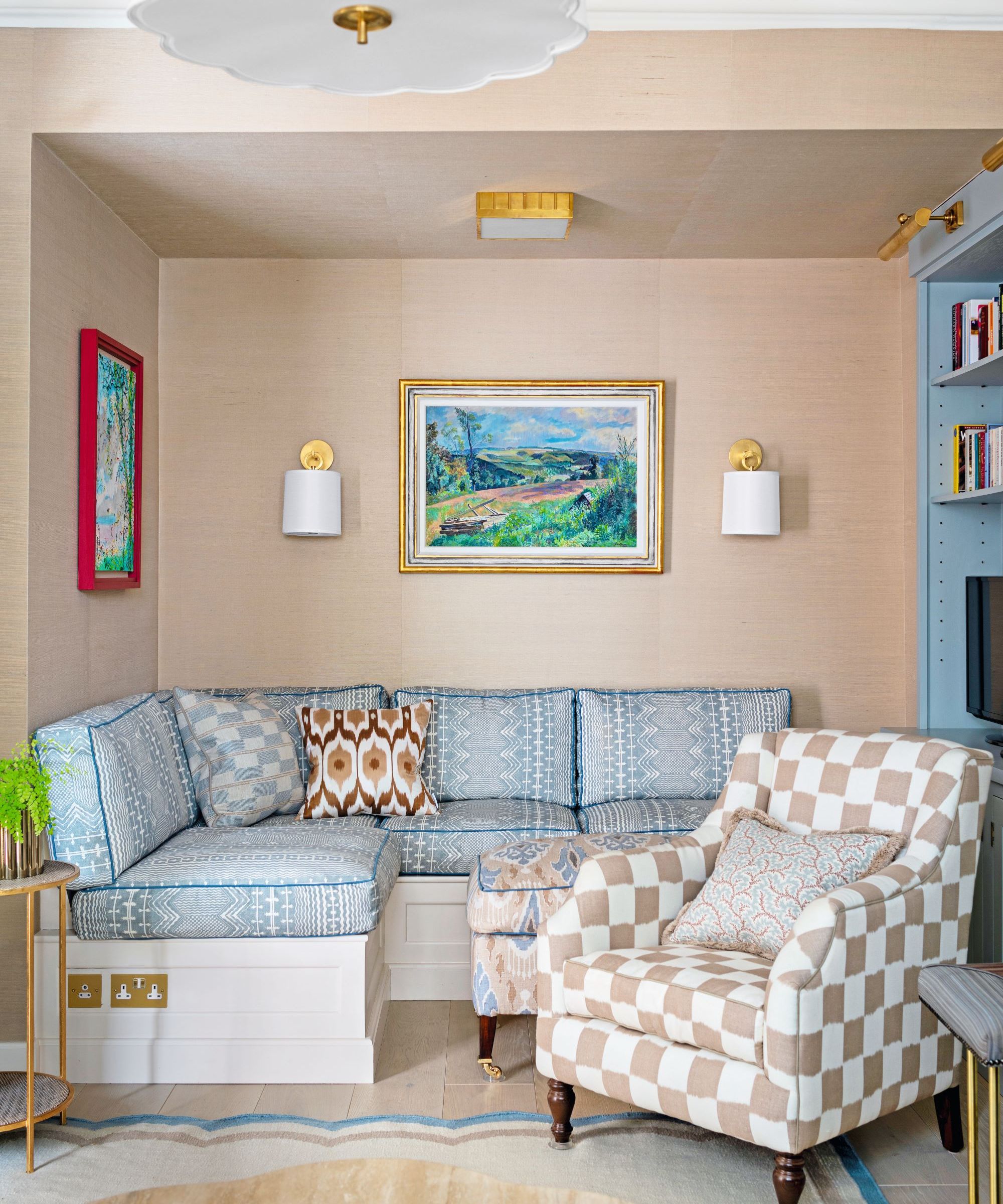
‘Decorating with pattern is a great way to introduce character to living room decor,’ explains Bunny Turner, interior designer, Turner Pocock. It can be used to define a space and change the tone of different areas. ‘For example, you might want a bolder pattern on upholstery in a formal living area with a constant pattern used in an adjacent snug.’
The key is to start with a fabric that has a striking pattern featuring more than three colors. From that fabric, choose the colors to be used in the scheme, then select a combination of designed in that palette, perhaps a stripe, a geometric, a floral, and a textural option such as a coarse linen or herringbone.
Whether it’s through textiles, wall treatments, or furniture, introducing pattern can add visual interest, energy, and a sense of personality to the space.
38. Ditch the media console for wall-mounted solutions
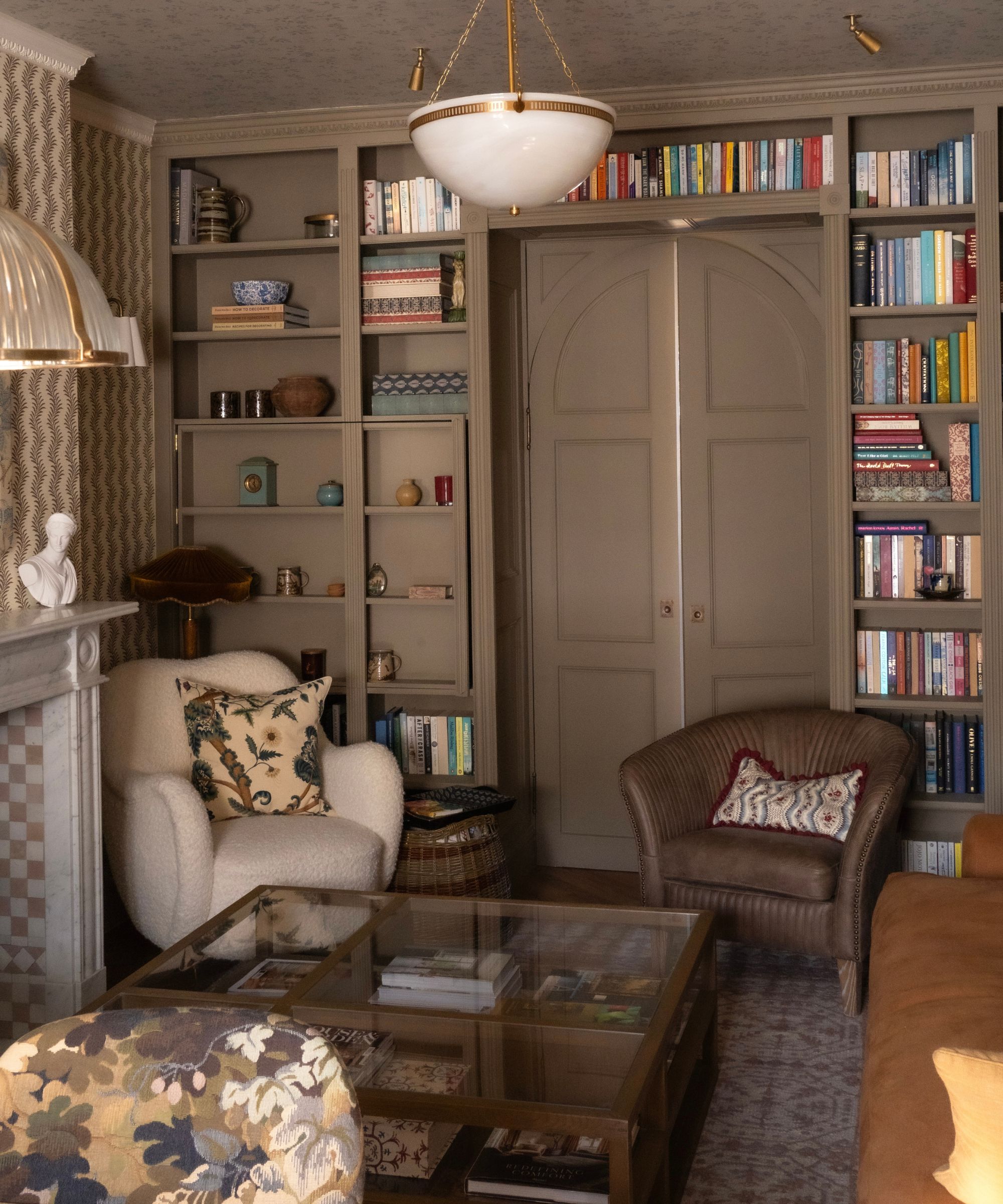
One of the most popular moves seen in living rooms in 2025 is the ditching of bulky media consoles in favor of sleek, wall-mounted solutions.
'Replace bulky entertainment units with sleek wall-mounted solutions and introduce multi-functional furniture pieces that work for both daily living and entertaining,' suggests Laura Hammet. 'The key is to maintain clear pathways while maximizing usable space through thoughtful zoning.'
Wall-mounted or hidden TVs, like the one seen above concealed in the bookshelves, or floating shelves not only create a cleaner, more streamlined look but also free up valuable floor space, making your living room feel more open and airy.
39. Use furniture to exaggerate a living room's proportions

One of the most powerful ways to enhance the dynamics of a living room is by playing with proportions through your furniture choices.
In a larger living room, using bold, larger-scale furniture can make the room feel more cohesive and cozy. Try oversized sectionals or extra-wide chairs that help ground the room.
Additionally, if your living room has low ceilings – or you want to make a living room's ceilings feel taller than they are – picking a low-slung couch for a small living room is a simple way to make the room feel taller. When you’re working with a small space, try to use furniture with a more streamlined, low-profile design.
40. Ensure there are plenty of seating options
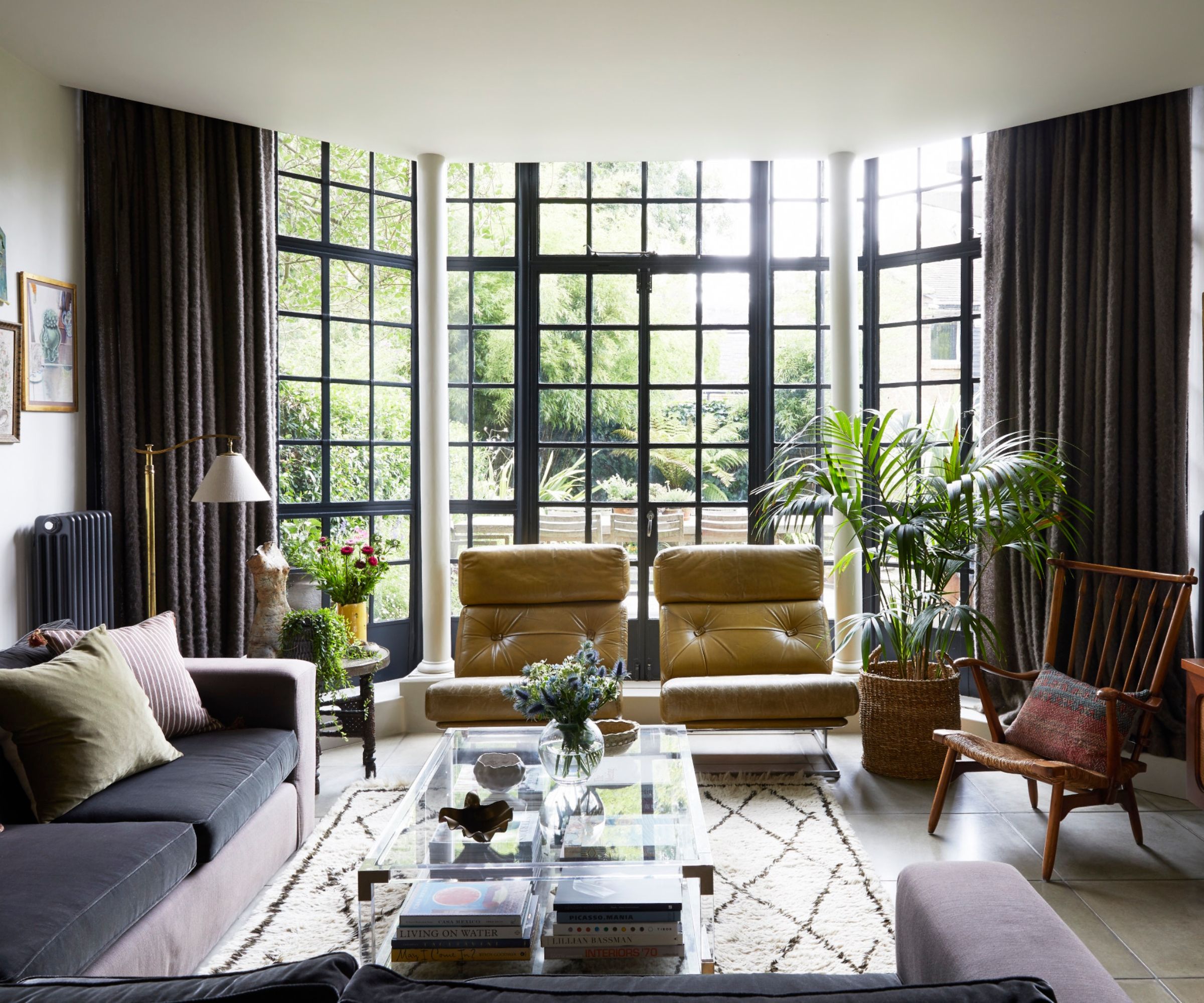
Living room seating ideas are integral to a successful lounge design. Incorporating a variety of seating types as well as a substantial amount of options will ensure your living room has comfort at its core.
Dieter Vander Velpen says, 'Consider how you will actually use the space. For large families, think of ways to add small extra seating like poufs that you can easily add to the setting. And if you have a young child, a large pouf with a tray can double as a coffee table and be pushed aside for playtime on the carpet.'
The living room (pictured above) features an array of seating, such as the duo of armchairs, a wooden chair and two plush sofas.
When it comes to living room ideas, there are so many elements – color, layouts, decor, furniture, flooring, we could go on. But it is a room we spend so much time in, so it's important to make all the right decisions from the beginning.
Think about what's most important to you and your family – is it having a space to really relax in? Or a multipurpose space that needs to wear a few hats throughout the day? Do you want it to be colorful and bold or more lean towards hushed and serene?
Imagine what you want the space to look like and how you want to be used, and then let the living room inspiration above guide your choices.







